Produced by:





Produced by:




This Black Policy Playbook for an Equitable America is designed to provide evidence-based recommendations addressing critical policy issues affecting Black communities across the United States in 2025 and beyond. The report was developed by the Congressional Black Caucus Foundation and the Joint Center for Political and Economic Studies, focusing primarily on key issues that overlap with our respective organizations’ research and policy expertise. We also solicited input from various organizations that share our commitment to improving the conditions of Black communities. Many others signed on in support of the agenda presented in the Overview below and detailed in the main pages of the report.
We anticipate that this report will serve as a resource for policymakers to collaborate with researchers, advocates, and community organizations in developing solutions that promote equity and justice. Importantly, while this agenda focuses on recommendations for Black Americans, we align with research clearly demonstrating that when Black people make progress, all Americans benefit.
Our two organizations are deeply invested in advancing and uplifting Black Americans—and, by extension, all Americans. In crafting this policy agenda, we demonstrate our belief that only through combined, concerted efforts can our nation embrace positive change. Our collaboration with numerous other organizations is a testament to the power of collective action and advocacy, which, when combined with the legislative efforts of policymakers, is a powerful force. (See the Acknowledgments section of this report for a complete list of contributing organizations.)

The social and political landscape of the United States looks very different today than it did when the Congressional Black Caucus Foundation and the Joint Center for Political and Economic Studies first initiated this project in the early part of 2024. At that time, many of the Biden-Harris administration’s policies enacted by Congress in 2021–2024 were charting meaningful new progress for Black Americans. From historic investments in clean energy and physical and social infrastructure across the nation to bold new workforce development policies and whole-of-government racial equity initiatives, federal policymaking was beginning to address long standing racial health, wealth and income gaps and open more opportunities for Black Americans.
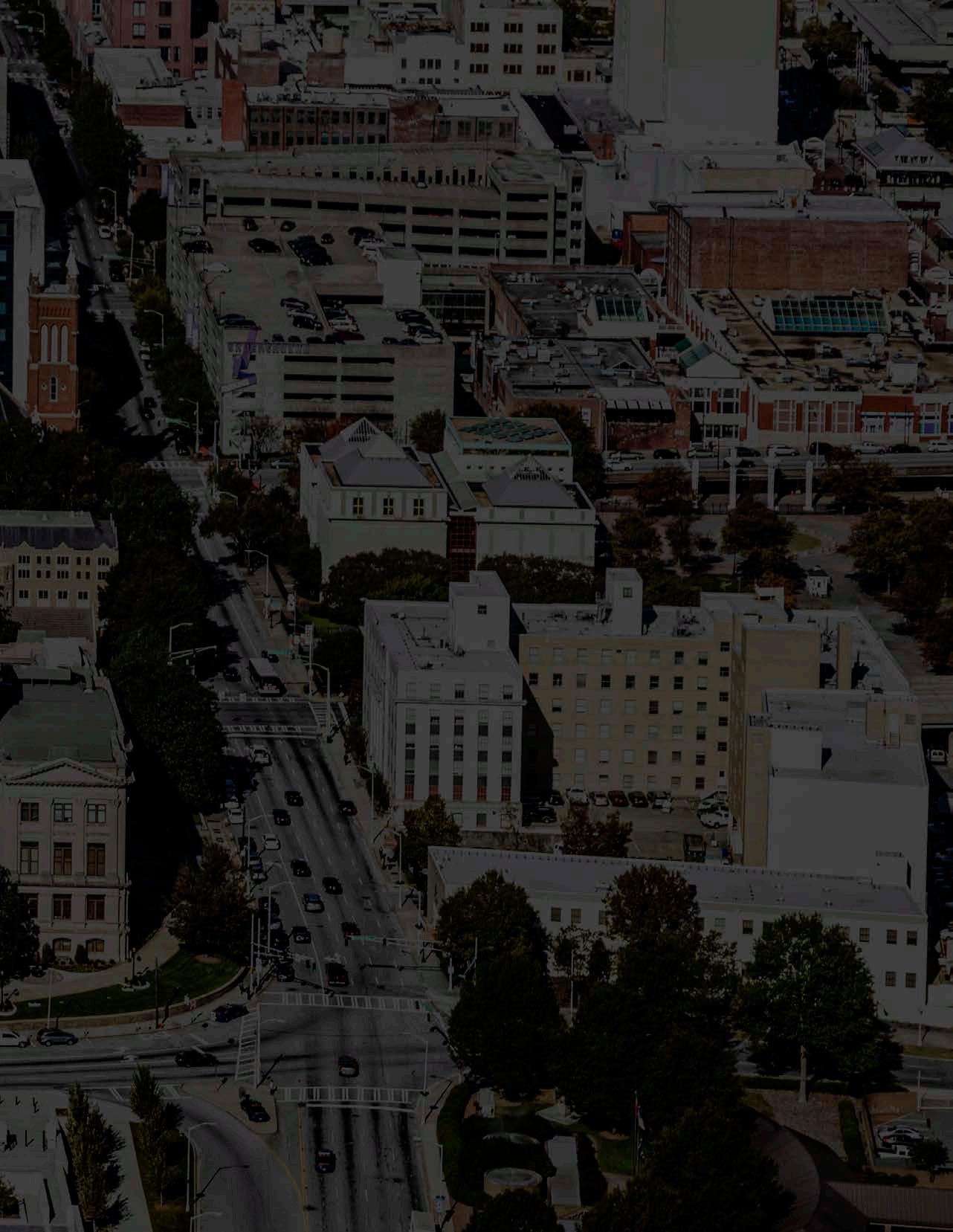
Yet even as we launched this project, racial disparities continued to persist across our nation, be they in economic wealth and workforce opportunities, quality healthcare, or education. Black Americans are still discriminated against in our judicial system and remain systematically excluded from participation and leadership in a growing technological ecosystem, thus reproducing barriers to economic opportunity that already plague workforce development policies. Further, Black Americans face restrictive voter laws and ongoing disenfranchisement that have limited opportunities to fully engage in civic processes, making economic and social systemic change difficult.
Using public policy to address these racial inequities is beneficial to both Black Americans and Americans across all races and ethnicities. Despite rhetoric suggesting otherwise, the federal government can use public policy to both address past harms and create opportunities for Black and other communities to thrive. Research from the St. Louis Federal Reserve Bank, for example, shows that increasing wealth for Black households, which has been stifled due to structural racism, would help to grow the national economy—just one of a myriad of evidence-based examples of the importance of equitable policymaking documented in this report.
Indeed, all of the longstanding and systemic racial barriers to progress in the United States harm not just Black Americans, but all Americans, as the second Trump administration seems determined to prove anew. Specifically, the harmful impacts of various efforts by President Trump and his new administration—through executive orders and other administrative actions in large part through the new White House Department of Government Efficiency—is undoing much of the BidenHarris administration’s progressive efforts. The TrumpVance administration is undermining and challenging civil rights, too, cutting not just diversity, equity, and inclusion (DEI) programs out of the federal government but also historic civil rights protections stretching back to the 1960s.
These efforts at the federal level are being matched by some states, too, mostly in the South, especially attacks on voting rights. Meanwhile, by extension, numerous corporations are rolling back or removing their own DEI initiatives, among other, farreaching impacts, while across all levels of education action to whitewash American history anew are taking hold. Many of the actions taken by the Trump-Vance administration and mirrored by state and local governments and other public and private institutions threaten to deepen inequities across our country, particularly for Black Americans and other marginalized groups.
None of this is new for Black communities, which have experienced the reversal of progress before. This is why today is once again a pivotal moment for Black Americans. Where there is struggle, there is hope; where barriers exist, so do opportunities.
This report details where and how our nation’s policymakers can continue to advocate and fight for an America where inequities are overcome and where everyone has an equal opportunity to pursue and achieve success and dignity. The policy agenda outlined in this report prioritizes seven key areas for advancing Black communities:
• Voting Rights and Civic Engagement
• Economic Opportunity and Advancement
• Workforce
• Education
• Healthcare
• Criminal Legal System Reform
• Technology and Telecommunications Policies


Our goal with each of these areas of focus is not full coverage of every issue that is important for Black equality, but rather to focus on issues that represent key areas for Black advancement. As this report will document, Black people continue to experience significant disparities in access to quality healthcare and education and are burdened with medical and educational debt at higher rates than their racial peers. Racial bias in the criminal legal system continues to perpetuate the over policing and disproportionate incarceration of Black people. African Americans face ongoing barriers to economic advancement such as home and business ownership and lower wages, while restrictive voter laws, ongoing disenfranchisement, and gerrymandering hobble their abilities to participate civically, Black people also face barriers to full participation in the growing technological sector, while emerging technologies threaten to perpetuate and amplify existing discrimination.
As organizations committed to open-minded inquiry, rigorous research practices, and
evidence-based approaches to policy recommendations, we developed this policy agenda with these guiding principles in mind. In each section, we also provide policy brief lists of priorities that, if implemented, would result in significant progress for Black Americans. These priorities focus on federal actions, but in some cases are opportunities for state-level action, as well as for other social, economic, and educational institutions across our nation. Additionally, we provide a list of relevant resources for each of the seven issue areas, which provide additional subject information and insights into each topic.
While we anticipate challenges in the adoption of many of our priority recommendations federally in 2025, we are confident some of them will be enacted at state and local levels and by many other social institutions. Our policy priorities in this agenda constitute a way forward in the continuing struggle for equitable opportunities and outcomes for Black Americans—and in turn all Americans.


Voting rights are the cornerstone of American democracy, ensuring that every citizen has an equal voice in shaping the nation’s future. The passage of the Voting Rights Act of 1965 marked a historic victory in the fight against racial discrimination in voting, removing barriers that had long disenfranchised Black Americans.
Yet six decades later, on the eve of the Act’s 60th Anniversary, ongoing efforts to restrict voting access threaten this progress. Strict voter ID laws, racial gerrymandering, voter roll purges, polling place closures, voter intimidation, and disinformation campaigns disproportionately impact Black voters, suppressing turnout and undermining fair representation. And make no mistake: These disenfranchisement efforts threaten all American voters and the very foundations of our constitutional republic. In response to these ongoing threats, House Democrats, led by Representative Terri A. Sewell of the Congressional Black Caucus, reintroduced the John Lewis Voting Rights Advancement Act, aiming to restore and strengthen key protections of the original Voting Rights Act.
Addressing these challenges requires strong policies that protect and expand access to the ballot box. The following section outlines the critical barriers to voting rights and the policy solutions needed to ensure a truly inclusive democracy.
States have been chipping away at the Voting Rights Act since its 1965 passage. Within the past decade, almost 100 restrictive voting laws have been enacted in at least 29 states. Strict voter ID laws disproportionately impact Black voters, as they are more likely to face barriers in obtaining acceptable forms of identification. States with strict voter ID laws experienced a decrease in Black voter turnout.
These laws have created unnecessary hurdles that suppress Black voter registration and turnout, undermining the principle of equal access to the ballot box. Voter roll purges, often conducted under the guise of maintaining accurate voter registration lists, disproportionately affect Black voters. These purges target voters with felony convictions and individuals who may not have participated in recent elections or have moved frequently. As a result, there are eligible Black voters who find themselves disenfranchised at the polls or have less political voice due to this voter ID rules and voter roll purges.
Prioritites:
• Advocate for same-day voter registration laws, allowing voters to register or update their registration on Election Day
• Conduct regular audits of voter rolls and the purging process to ensure compliance with state and federal laws
• Deploy mobile units to issue IDs in rural and underserved communities, reducing barriers for those who cannot easily travel to ID-issuing locations
• Ensure that voter rolls are publicly accessible and that voters can easily verify their registration status online
• Establish federal standards and guidelines for voter roll maintenance to ensure uniformity and fairness across states
• Expand acceptable forms of ID for voting, including student IDs, employee IDs, and utility bills
• Implement stringent criteria for the maintenance of voter rolls, ensuring that only individuals who have moved out of state, are deceased, or have been adjudicated as non-eligible are purged
• Pass the Freedom to Vote Act, which would limit states’ ability to indiscriminately remove voters from rolls, preventing the disenfranchisement of eligible voters through mass purges
• Pass the John R. Lewis Voting Rights Advancement Act, which would prevent discriminatory changes such as requiring proof of identity to vote and making it easier to remove voters from the rolls in places with sufficiently large minority populations
• Prohibit purges based solely on voter inactivity
• Promote Automatic Voter Registration policies that automatically register eligible citizens to vote when they interact with state government departments such as Divisions of Motor Vehicles and social services agencies
Resources:
• Block the Vote: How Politicians are Trying to Block Voters from the Ballot Box, (American Civil Liberties Union).
• Democracy Diverted Polling Place Closures and the Right to Vote, (Leadership Conference for Civil and Human Rights).
• How States Can Prevent Election Subversion in 2024 and Beyond, (Brennan Center for Justice).
• New Laws Risk Purging Eligible Voters in Advance of This Year’s Elections, (Voting Rights Lab).
• States Have Added Nearly 100 Restrictive Laws Since SCOTUS Gutted the Voting Rights Act 10 Years Ago, (Brennan Center for Justice).
• Strengthening Democracy: A Progress Report on Federal Agency Action to Promote Access to Voting, (Leadership Conference for Civil and Human Rights).
• Ten Years After Shelby County v. Holder: Charting the Path Forward for Our Democracy, (Leadership Conference for Civil and Human Rights).
Voter intimidation practices disproportionately impact Black voters. Tactics such as aggressive poll watching, false challenges to voter eligibility, and the presence of law enforcement or white nationalists in paramilitary gear at polling places can create an atmosphere of fear and intimidation. These practices not only deter Black voters from exercising their right to vote but also undermine the democratic principles of free and fair elections.
Reports of voter intimidation and obstruction have raised significant concerns for Black voters’ safety. Instances of intimidation have been documented in door-to-door campaigns and at polling places,
creating an atmosphere of fear and suppression. In Arizona, armed individuals intimidated Black voters near ballot drop boxes. In Florida and Missouri, state governments have blocked federal monitors from observing polling places, raising questions about transparency and oversight in these states. And in Georgia, lawmakers have enacted legislation making it a crime to provide food and water to voters standing in line at the polls, a measure that disproportionately affects voters in long lines, often in Black communities.
Addressing these issues is critical to ensuring that all citizens can participate in the electoral process without fear or obstruction.
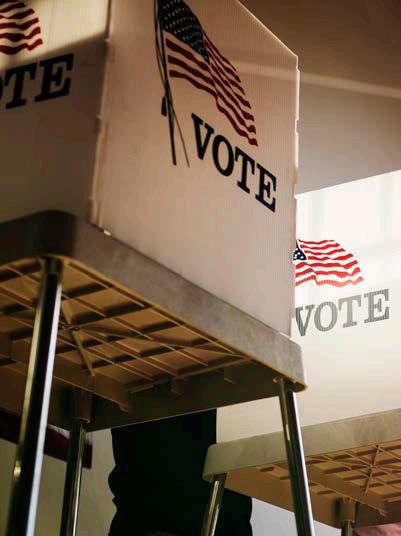
Prioritites:
• Enact and enforce strict laws at both federal and state levels that explicitly prohibit voter intimidation practices, including provisions for penalties and legal action against individuals or groups found guilty of such acts
• Establish a dedicated hotline or online platform where voters can report instances of intimidation anonymously
• Launch widespread public awareness campaigns to educate voters about their rights and the illegality of voter intimidation tactics
• Pass the Freedom to Vote Act, which would establish protections for voters waiting in line as
Resources:
• Election Officials in Communities of Color Face More Abuse, (Brennan Center for Justice).
• Guide to Laws Against Intimidation of Voters and Election Workers, (Brennan Center for Justice).
• Is Voter Intimidation Illegal? What Should I Do If I Experience It?, (Washington: Campaign Legal Center).
• What Voter Intimidation Looks Like Today, (Democracy Docket).
well as for election workers, volunteers, and poll workers from harassment and threats
• Pass the John R. Lewis Voting Rights Advancement Act, which would expand federal oversight on elections to monitor compliance with voting rights protections and allocate resources to enforce the law effectively, and strengthen legal standards and processes for challenging racially discriminatory voting laws, making it easier to bring cases under Section 2 of the Voting Rights Act
• Provide comprehensive training for poll workers and election officials to recognize and effectively respond to instances of voter intimidation
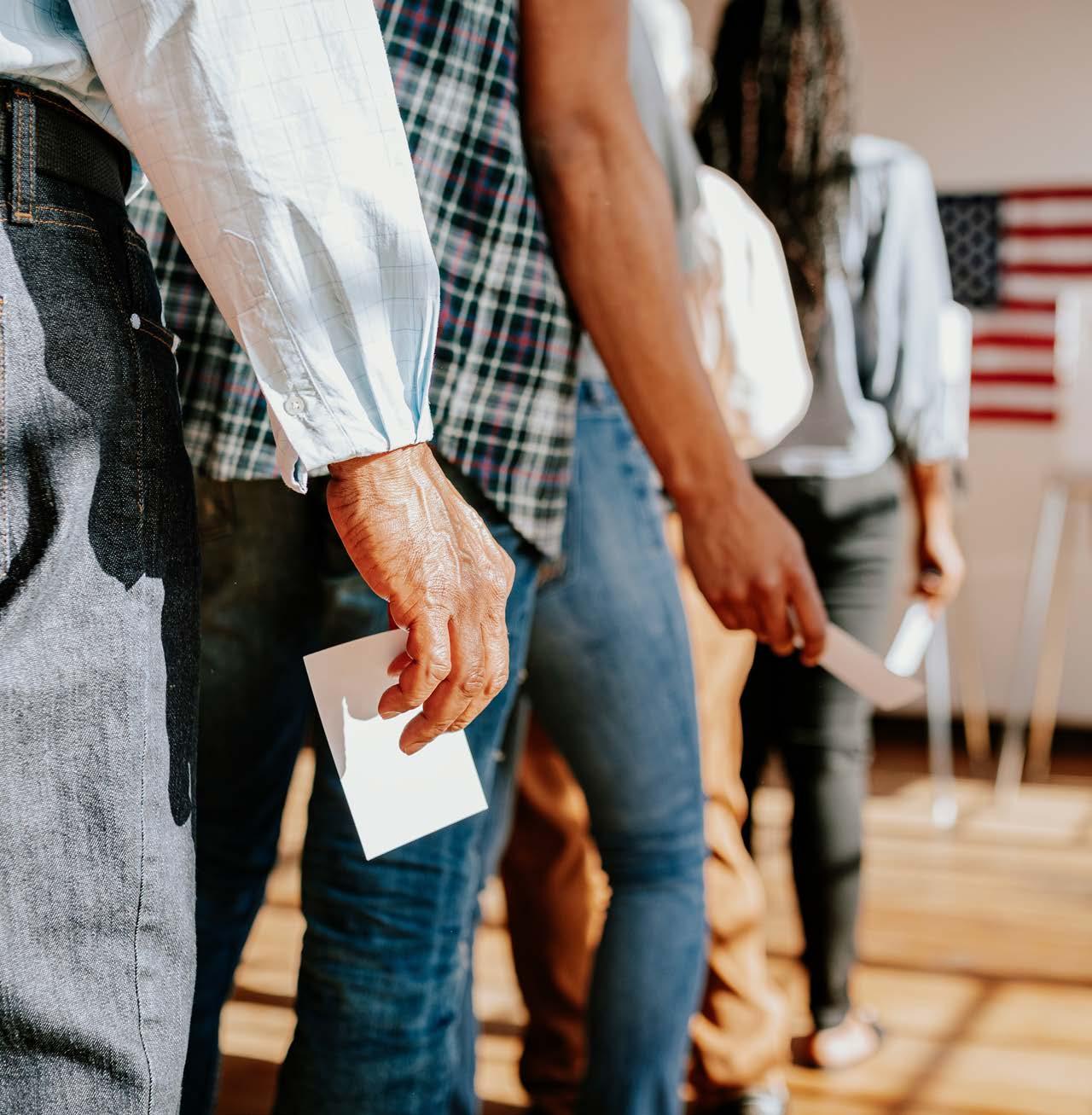
Black voters often experience longer wait times and reduced access to polling places due to factors including limited funding for polling stations and the closure of polling locations in predominantly Black neighborhoods. In fact, there has been a disproportionate increase in polling place closures in majority Black neighborhoods compared to majority White neighborhoods.
Meanwhile, Black voters are less likely to trust mail ballots and less likely to vote by absentee or main-in-ballot than white, Hispanic, and Asian American voters. Thirty-eight percent of Black voters say they voted by mail in the past, compared with 45 percent of white voters, 51 percent of Hispanic voters and two-thirds of Asian American voters. Thus, longer in-person wait times and reduced access to polling places take on greater significance.
In addition to reduced access to polling places, there have been significant reductions in early voting and vote-by-mail options. In Georgia, for example, Black voters were substantially more likely to vote on Sundays rather than on Election Day. Also in Georgia, during the 2020 primary, Black individual’s mail ballots were rejected at significantly higher rates than those of white voters. Auditors in Washington State found that the mail ballots of Black voters were rejected at four times the rate of white voters.
Taken together, these barriers discourage Black voters, particularly those with limited resources or mobility, from participating in elections, thereby perpetuating systemic inequalities in the democratic process.

Prioritites:
• Advocate for a minimum of two weeks of early voting, including weekends and evenings, to accommodate diverse schedules and reduce crowding on Election Day
• Automatically send mail-in ballots to all registered voters, ensuring that everyone has the option to vote by mail without needing to request a ballot
• Deploy mobile voting centers to reach remote, rural, and underserved urban areas, making it easier for all voters to access in-person voting options
• Ensure an adequate number of polling places are available in all communities to avoid disproportionately long travel times or wait times for certain populations
• Extend polling place hours to accommodate voters with non-traditional work schedules and other commitments, ensuring that all voters have ample opportunity to cast their ballots
• Increase the number of early voting locations, especially in underserved and rural areas, to
Resources:
• Black to the Ballot 2020: New Vote-by-Mail Policies Lead to New Forms of Voter Suppression, (Black Futures Lab).
• Growing Racial Disparities in Voter Turnout, 2008–2022, (Brennan Center for Justice).
• Southern Voters’ Battle Against Voter Suppression, Intimidation, and a Virus, (Southern Poverty Law Center).
reduce travel time and wait times for voters
• Install secure drop boxes in convenient locations for voters to submit their ballots during the early voting period
• Partner with public transportation agencies to provide free or discounted rides to polling places on Election Day and during early voting periods
• Pass the Freedom to Vote Act, which would establish provisions for automatic voter registration, same-day registration, expanded early voting, and mail-in voting for all eligible voters
• Pass the John R. Lewis Voting Rights Advancement Act, which would require public notice of polling place closures and redistricting
• Standardize and improve signature-verification processes to ensure that valid ballots are not unfairly rejected and provide a timely cure process for voters whose signatures are questioned
• Polling Places in Black Communities Continue to Close Ahead of November Elections, (Governing).
• Smartphone Data Show Voters in Black Neighborhoods Wait Longer, (Scientific American).
• Waiting to Vote, (Brennan Center for Justice).

Disinformation campaigns aimed at spreading false information about voting procedures, election dates, and candidates disproportionately target majority Black communities. These campaigns sow confusion and distrust, leading to voter suppression and disenfranchisement. They exploit existing vulnerabilities and undermine efforts to promote equitable access to the electoral process for Black voters.
In recent elections, voter intimidation tactics have increasingly targeted majority Black communities, particularly through technological means. During the 2020 election, robocalls in predominantly Black neighborhoods aimed to dissuade residents from voting. In New Hampshire, for example, voters experienced AI-generated robocalls impersonating President Biden to discourage them from going to the polls. Online activists also targeted Black voters with fake AI images and messages urging them to vote Republican.
Disinformation campaigns have extended beyond digital platforms. There are reports of door-todoor efforts in Black neighborhoods spreading false information aimed at undermining voter confidence. These tactics not only suppress voter turnout but also contribute to the erosion of trust in democratic institutions.
Disinformation campaigns extend beyond domestic actors. Since the 2020 election, the country has witnessed an increase in foreign-initiated misinformation, disinformation, and deepfake campaigns. There have been reports of Russian operatives targeting Black voters with messages advocating for election boycotts or support for thirdparty candidates. Other Russian disinformation campaigns have targeted voting procedures, including false claims about voter fraud, voter suppression, and the security of mail-in ballots.
These domestic and foreign campaigns further illustrate the deliberate efforts to disenfranchise Black voters and other minority voters and undermine the integrity of the electoral process.

Prioritites:
• Establish a dedicated hotline or online platform where citizens can report instances of disinformation related to elections
• Forge agreements with other countries to coordinate efforts in combating cross-border disinformation campaigns targeting elections, and share intelligence, best practices, and resources to enhance collective defense against foreign interference
• Hold social media platforms accountable for the spread of disinformation by imposing fines or other penalties for failure to address malicious content promptly
• Implement cybersecurity measures to safeguard election infrastructure and prevent hacking or tampering with voter registration systems, ballot counting machines, and electronic voting systems
• Pass the Freedom to Vote Act, which would establish standards to secure election systems and prevent foreign interference, including support for paper ballots and improved cybersecurity measures for election infrastructure, and also would prohibit the dissemination of false and misleading information designed to deter eligible voters from casting a ballot
• Pass the John R. Lewis Voting Rights Advancement Act, which would cover states and localities that make discriminatory changes, including reducing the availability of or altering multilingual voting materials
• Require social media platforms and online advertising networks to provide detailed disclosures for political advertisements, including information about the advertiser, funding sources, and targeted demographics
Resources:
• The Effect of AI on Elections Around the World and What to Do About It, (Brennan Center for Justice).
• False Claims of Noncitizen Voting Harm Our Democracy, (Campaign Legal Center).
• How Artificial Intelligence Influences Elections, and What We Can Do About It, (Campaign Legal Center).
• New State Legislative Efforts to Stem the Tide of AI-Generated Election Disinformation, (Voting Rights Lab).
• What Voter Intimidation Looks Like Today, (Democracy Docket).
The systemic over-criminalization of Black communities in the United States has led to profound disparities in voter access, as outlined by The Sentencing Project. Approximately 4 million Americans are deprived of their fundamental right to vote due to past felony convictions, with Black citizens disproportionately affected. One out of every twenty-two Black individuals of voting age cannot participate in the democratic process, a disenfranchisement rate more than 3 times higher than that of all other Americans. In five states—Arizona, Florida, Kentucky, Tennessee, and South Dakota—more than one in ten Black adults is disenfranchised; that number is more than 15 percent in Tennessee. In 1980, nine states disenfranchised at least 5 percent of their Black adults; today, fifteen states do so.
In recent years, legislative actions have further hindered efforts to restore voting rights to disenfranchised individuals. In Florida, a law enacted in 2018 undermined a ballot measure aimed at re-enfranchising formerly incarcerated individuals by imposing financial barriers. This law required individuals with newly restored rights to pay off certain court debts before having their voting rights restored, effectively disenfranchising those who cannot afford the associated costs. In 2023, Virginia’s governor reversed an executive action that had provided a pathway for citizens to regain their voting rights, making Virginia the sole state to permanently bar all citizens with past convictions from participating in the electoral process.
These regressive policies underscore the urgent need for comprehensive reforms to address racial disparities in voter access due to felony disenfranchisement and ensure that all citizens can exercise their right to vote without undue barriers after completing their sentences.
Prioritites:
• Extend felony enfranchisement rights to individuals on probation and parole
• Implement automatic restoration of voting rights for individuals upon completion of their sentences
• Provide education and voter registration assistance to individuals with past convictions to help them navigate the process of regaining their voting rights

• Pass the Freedom to Vote Act, which would restore federal voting rights to formerly incarcerated citizens upon their release
• Remove financial barriers to felony enfranchisement by abolishing requirements to pay fines, fees, or restitution before regaining voting rights
Resources:
• Democracy Detained: Fulfilling the Promise of the Right to Vote from Jail, (NAACP Legal Defense and Educational Fund: Thurgood Marshall Institute).
• The Inclusive Democracy Act: A Step Toward Real Democracy, (Campaign Legal Center).
• Locked Out 2024: Four Million Denied Voting Rights Due to a Felony Conviction, (The Sentencing Project).
• Unshackling the Vote: Restoring Civic Participation for Persons Recently Released from Incarceration, (Washington: Congressional Black Caucus Foundation).
Gerrymandering disproportionately impacts Black voters by diluting their voting power and undermining their ability to elect representatives who reflect their interests and concerns. Through the manipulation of district boundaries, gerrymandering often concentrates Black voters into a few heavily Democratic districts or divides them among several districts, limiting their influence. This practice perpetuates racial segregation in electoral representation and hinders efforts to achieve equitable political representation for Black communities.
Challenges to the fairness and equity of congressional and legislative maps have intensified, with 84 cases filed across 28 states as of January 27, 2025. These legal battles primarily focus on allegations of racial discrimination and partisan gerrymandering, reflecting widespread concerns about the integrity of electoral boundaries.
In Alabama and Louisiana, for example, federal courts have mandated the redrawing of congressional maps
Prioritites:
• Enact legislation at the federal and state levels to establish clear legal standards prohibiting racial gerrymandering
• Establish independent redistricting commissions composed of bipartisan members or nonpartisan experts to oversee the redistricting process
• Pass the Freedom to Vote Act, which would set rules against partisan gerrymandering and require states to use fair and impartial methods when drawing congressional districts
• Pass the John R. Lewis Voting Rights Advancement Act, which would:
• Reinstate a preclearance process and require jurisdictions with recent histories of voting discrimination to obtain federal approval before changing voting laws or practices
• Update the criteria used to determine which
Resources:
• Black and Latino Voting Power Under Threat in Redistricting Case, (Brennan Center for Justice).
• Battling Racial Vote Dilution in Voting Maps, (Campaign Legal Center).
due to violations of the Voting Rights Act. In Florida, voting rights organizations and concerned citizens have filed lawsuits alleging racial discrimination and partisan gerrymandering in violation of state constitutional provisions. And in South Carolina, a federal court has ordered the redrawing of a congressional district deemed unconstitutional in its racial composition. These actions highlight the importance of the judiciary’s role in safeguarding electoral processes against discriminatory practices.
The legal landscape is shaped by ongoing litigation initiated by Black voters and civil rights organizations challenging the legitimacy of newly enacted congressional maps. These cases underscore the importance of transparency, accountability, and adherence to democratic principles in the redistricting process to guarantee fair and inclusive representation for Black citizens and ensure all Americans’ votes are equitably tallied.
jurisdictions are subject to preclearance based on recent instances of voting rights violations
• Prohibit the practice of prison gerrymandering, which counts incarcerated individuals as residents of the prison location for redistricting purposes
• Provide avenues for legal challenges to redistricting plans that are deemed to perpetuate racial gerrymandering
• Strengthen enforcement mechanisms to hold accountable those responsible for violating antigerrymandering laws and ensure compliance with court rulings mandating fair and lawful districting practices
• Utilize accurate and up-to-date census data as the primary basis for redistricting to ensure that district boundaries accurately reflect demographic shifts and population changes
• Democracy Defended: Analysis of the Barriers to Voting in the 2018 Midterm Elections, (NAACP Legal Defense and Educational Fund: Thurgood Marshall Institute).
• New Report Outlines How to Make a Redistricting Commission Effective, (Campaign Legal Center).
• Why We Need The John Lewis Voting Rights Advancement Act and Freedom to Vote Act, (NAACP Legal Defense and Educational Fund).


The racial wealth divide is a persistent and growing challenge for the U.S. economy. Wealth provides households with a financial cushion to weather economic setbacks and provides resources to spur economic mobility.
But Black households possess significantly less wealth than households of other races and ethnicities, leaving Black families less able to take advantage of the benefits of accumulating and holding wealth for themselves and their future generations. As of 2022, wealth for the typical Black family was $44,900, while wealth for the typical family overall was $192,900.
Further, the racial wealth divide harms the overall U.S. economy by “dampening effect on consumption and investment [and] will cost the US economy between $1 trillion and $1.5 trillion between 2019 and 2028—4 percent to 6 percent of the projected GDP in 2028.”
Policymakers can use public policy to address the issues that could help close the wealth divide. Black families hold far less value than white households in retirement accounts, home equity, stocks, and other real estate. The policies outlined in this section aim to address wealth building barriers for Black households.

Historically, housing policy in the United States has intentionally excluded and underserved Black households. Redlining, segregation, and wealth and income disparities have caused significant challenges for both renters and homeowners. Black households have a lower homeownership rate (44 percent) than White (73 percent) and Hispanic (51 percent) households.
Additionally, racial bias in appraisals devalues homes in Black communities, making them less of a tool for wealth building for Black homeowners and others residing in Black communities.
Despite the Fair Housing Act’s passage in 1968 outlawing housing discrimination and requiring the creation of vibrant, inclusive, and thriving communities, Black tenants continue to face discrimination in the housing market. More than half of Black renters were cost-burdened, or spent more than 30 percent of their incomes on housing in 2021, and more than a third were severely cost-burdened and spent more than half their incomes on housing.
Black renters represent more than half of all eviction filings. Black people make up 36.6 percent of people experiencing homelessness and more than 37 percent of all homeless families with children. Federal rental
assistance falls short of needed funding to serve lowincome families.
Housing supply also is a challenge. The United States simply does not have enough homes available to meet needs. Segregation and local exclusionary zoning laws stifle needed investments and innovation required to create the necessary 5 million plus affordable housing units. Then there’s the greater role of new technologies in housing-related decisions and automating bias, including through discriminatory risk-based pricing, tenant screening, automated-valuations models, insurance screening systems and others.
All of these barriers to fair and equitable housing for Black Americans and all Americans weigh heavily on our nation’s social and economic advancement.
Prioritites:
• Ensure federal infrastructure investments in the Inflation Reduction Act, the Bipartisan Infrastructure Investment and Jobs Act, and the CHIPS and Science Act comply with the Fair Housing Act’s affirmatively furthering fair housing obligations to ensure climate-mitigation efforts fairly reach all communities
• Fully enforce fair housing and lending laws, including ensuring AI complies with existing civil rights and consumer protection laws, and increase funding to strengthen local fair lending enforcement
• Increase access to fair and affordable housing through investments in public housing, rental assistance, and housing development and repair
• Increase racial home ownership equity through protecting Special Purpose Credit Programs, which expand underwriting criteria to include positive rental payment data and cashflow underwriting and investing in financial support for and first-generation home buyers through the Downpayment Toward Equity Act (HR 4231/ S3930)

• Integrate the review of racial equity in the lifecycle of financial services algorithm development and require auditing requirements for AI and automated decisions in housing and lending
• Oppose privatizing Fannie Mae and Freddie Mac and promote responsible governance and increased funding for fair and affordable housing at the Federal Home Loan Banks, which receive substantial taxpayer subsidies
• Pass the Housing Crisis Response Act (HR 4233) to address the nation’s fair and affordable housing crisis and the chronic undersupply of housing
• Pass the Neighborhood Homes Investment Act (HR3940/S657) to begin renovating and developing homes in communities where homes are undervalued
• Promote appraisal reform and oppose efforts to disband the federal Interagency Task Force on Property Appraisal and Valuation Equity (PAVE) and repeal federal and The Appraisal Foundation guidance issued to ensure fair and consistent appraisal outcomes for all consumers and communities
Resources:
• Scaling Economic and Housing Justice, Creating Justice in a Multiracial Democracy, (Columbia University: Teachers College Press).
• The Color of Law: A Forgotten History of How Our Government Segregated America, (New York: Liveright).
• “The United States’ History of Segregated Housing Continues to Limit Affordable Housing,” (Washington: Center for American Progress).
The U.S. tax code serves several purposes, including raising revenue to fund government programs and services such as social safety net programs and infrastructure investments, incentivizing productive, wealth-building activities such as home buying and business formation, and supporting low to moderate-income households through tax credits. A growing body of research shows that, in many instances, the tax code disadvantages Black households by penalizing them for circumstances beyond their control while providing benefits to households of other races.
More than half of all Black children are ineligible to receive the full benefits of the Child Tax Credit because their parents earn too little. The 2017 Tax Cuts and Jobs Act further exacerbated the problem by providing benefits for the highest wealth and highest income households in the country—largely white households. The IRS also audits Black households at 2.9-to-4.7 times the rate as other families, adding to their disadvantages in the tax system.
In 2025, the tax cuts passed into law in 2017 will expire. This presents an opportunity to reform critical parts of the tax code that disadvantage Black households and businesses and implement reforms that will advance Black economic security and thee financial and economic security of all Americans.
Prioritites:
• Address disparities in audit rates by shifting audits away from low-income households and maximizing efforts to collect maximum revenues
• Ensure Black households benefit from the tax system by reforming tax deductions such as the mortgage interest deduction or providing support through innovative tax policies such as renters tax credits
• Ensure the Low-Income Housing Tax Credit complies with the Fair Housing Act’s obligation to affirmatively further fair housing
• Expand the Child Tax Credit by increasing the

value of the credit and making the credit fully refundable
• Expand the Earned Income Tax Credit for workers without children in their homes so that it includes low-income young workers and older workers without dependent children in their homes while also increasing the value of the credit and raising the maximum income for eligibility
• Increase progressivity in the income tax system more by raising taxes on the highest earners and corporations
Resources:
• 2024 Racial Equity Progress Report, (Washington: U.S. Department of the Treasury).
• Disparities in the Benefits of Tax Expenditures by Race and Ethnicity, (Washington: U.S. Department of the Treasury).
• “How Tax Fairness Can Promote Racial Equity,” Color of Change.
• “Racial and Ethnic Disparity in Mortgage Interest Deduction,” (Washington: Tax Policy Center).
• “Racial Disparities in the Treatment of Capital Income in the Federal Individual Income Tax,” (Washington: Tax Policy Center).
• “When Tax Policy Discriminates: The TCJA’s Impact on Black Taxpayers, “New York: Roosevelt Institute).
• The Whiteness of Wealth, (New York: Penguin Random House).

Successful Black-owned businesses have the potential to create wealth and jobs. According to the most recent data available from the U.S. Census Bureau, Black business owners own nearly 4.3 million businesses. More than 161,000 Black-owned businesses have employees. And more than half of Black people in the United States report that owning a business is at least a somewhat important financial goal.
Unfortunately, Black people face barriers in their journey through entrepreneurship. Black-owned businesses are smaller than their counterparts and grow more slowly. They also face more barriers to raising capital. The ability
Prioritites:
• Increase access to capital for Black entrepreneurs by increasing funding for Community Development Financial Institutions (CDFIs) promoting government backed loan programs with more flexible terms and encouraging venture capital firms to invest in Black-owned businesses
• Enact policies to preserve and promote Minority Depository Institutions (MDIs), which could provide Black-owned businesses with access to capital at fair interest rates
• Center mission-driven community lenders in
to access capital is critical to starting and growing a business. According to the Federal Reserve’s 2023 Small Business Credit Survey, more than half (56 percent) of Black employer-owned businesses faced challenges with credit availability in the year prior to being surveyed.
Indeed, the Federal Reserve reports that more than any other racial or ethnic group, Black business owners reported facing a financial challenge of credit availability. To grow the number and impact of Black-owned businesses, policymakers must address the challenges these businesses face in accessing fair, affordable, and appropriate capital.
future legislation designed to counteract economic crises, building on the success of MDIs and CDFIs in undeserved small businesses during the pandemic via the 2020–2021 Payment Protection Program
• Enact policies to preserve and promote minority depository institutions, including through equity investments and brokered deposit placement
• Increase federal appropriations for the Minority Business Development Agency
Resources:
• “Financing Constraints and Entrepreneurship,” (Cambridge MA: National Bureau of Economic Research).
• “Pessimism and Hope: A Survey of the Financial Status and Aspirations of Black Americans,” Washington: Joint Center for Political and Economic Studies).
• “The State of MDIs 2024,” (Washington: National Bankers Association).
• “Research Supports It: Community Finance Institutions Were PPP Heroes,” (Washington: Opportunity Finance Network).


On the very first day of the new Trump administration, the White House issued executive orders banning diversity, equity, and inclusion in federal agencies and federal contracting, crippling initiatives that promote equitable hiring and advancement of Black workers and contractors.
Since then, attacks on worker protections have increased, including the firing of two Democratic commissioners of the Equal Employment Opportunity Commission, dismissing two members of the National Labor Relations Board, and appointing a U.S. Secretary of Labor, Lori Chavez-DeRemer, who supported antiunion right-to-work laws and rejected an increase in the national minimum wage during her confirmation hearing. More sweeping action against federal workers and worker protections are widely anticipated.
Workers’ rights are under attack. Black workers’ and jobseekers’ access to good jobs with strong wages and benefits continues to be a challenge. Policymakers must pursue legislative and administrative changes that address major issues in the current job market and the new attacks on workers. The policies in this section promote the right to a good job, breakdown occupational segregation, and ensure Black workers and communities have access to the multi-billion-dollar federal investments, jobs, and industry.

Occupational segregation is the distribution of people across and within occupations, often based on gender, race, or ethnicity, leading to distinct and unequal job sectors. In workforce development, this phenomenon manifests when certain groups are concentrated in specific roles or industries, frequently resulting in unequal opportunities and pay disparities. For instance, women and Black workers are often overrepresented in lowerpaying, lower-quality jobs while being underrepresented in higher-paying, higher-quality jobs.
In 2023, Black women lost $42.7 billion in wages compared
to white men due to the impacts of segregation by the occupation and industrial sectors. The Stanford Center on Poverty and Inequality found occupational segregation among millennials accounts for 28 percent of the gender wage gap and 39 percent to 49 percent of racial wage gaps.
Rooted in the history of segregation that subjugated Black workers, occupational segregation can stem from social norms, educational disparities, and biases in hiring practices. Societal expectations, for example, might steer women toward caregiving professions such as nursing or teaching, while men might be encouraged into fields
in skilled trades or information technology. Additionally, systemic barriers in education and training opportunities can limit access for Black learners to enter and advance in higher-paying fields, with some studies showing no change in segregation level for nearly 30 years.
Workforce development initiatives aim to address these disparities by promoting inclusivity and equal opportunity. Strategies might include targeted training programs, mentorship opportunities, and policies designed to reduce bias in recruitment and hiring. Efforts to diversify and broaden educational curricula can also play a crucial role in preparing individuals for a wider range of careers.
Prioritites:
• Ban the box asking prospective employees about their possible involvement in the justice system on job applications, limit the use of criminal background checks, and pass policies to expand expungement and record sealing
• Close the loopholes in the Equal Pay Act of 1963 that companies use to avoid wage transparency
• Compensate Black workers in training programs and provide wraparound support such as child care, healthcare, transportation, technology, and coaching
• Eliminate work requirements and other barriers to federal benefits such as the Child Care and Development Block Grant subsidies, Temporary Assistance for Needy Families, the Supplemental Nutrition Assistance Program, and others, and require states to leverage these services for wraparound support services for workers
• Increase funding for Historically Black Colleges and Universities through increased state investment and dedicated funding in the Higher Education Act including Title III funds and the HBCU Capital Finance Program
To uphold these reforms, state and federal laws should hold employers and training providers alike accountable for consciously or unconsciously steering Black workers into low-wage fields. By tackling occupational segregation, workforce development seeks to ensure that all individuals, regardless of gender, race, or ethnicity, have equitable access to career opportunities and are fairly represented across different sectors. This not only places equity at the center of workforce development but also enhances overall U.S. economic productivity and innovation.
Resources:
• “Black Women and Vulnerable Work,” (Washington: Urban Institute).
• “The Limits of Educational Attainment in Mitigating Occupational Segregation Between Black and White Workers,” (Cambridge MA: National Bureau of Economic Research).
• “Occupational Segregation of Black Women Workers in the U.S.,” (New York: National Employment Law Project).
• “State of the Union: Occupational Segregation,” (Stanford University: Stanford Center on Poverty and Inequality).
• “U.S. occupational segregation by race, ethnicity, and gender,”
• Invest in data systems that track program-level outcomes for Black workers
• Require that education, employment, and training data be disaggregated by race at the program level
• Require the creation of state and local coordinating bodies to monitor and reduce racial and ethnic disparities across occupations, the types of credentials received, and earnings
• Set target goals to counter occupational segregation and provide financial incentives for improvements
• Support the Paycheck Fairness Act (HR 17), which would enable workers to talk openly about their salaries by protecting them from employer retaliation, prevent employers from asking about salary history, and allow Black and/or women workers to collectively challenge an employer’s company-wide pay discrimination in court
• Reauthorize the Workforce Innovation and Opportunity Act to establish funds for workforce development programs in partnership with HBCUs
(Washington: Washington Center on Equitable Growth).
• “Understanding black-white disparities in labor market outcomes requires models that account for persistent discrimination and unequal bargaining power,” Washington: Economic Policy Institute).
• “Whiter Jobs, Higher Wages Occupational Segregation And The Lower Wages Of Black Men,” (Washington: Economic Policy Institute).
Job quality distinguishes key characteristics of employment that impact workers’ quality of life beyond basic pay. Job quality involves several key factors: fair compensation, job security, working conditions, and career advancements.
Fair compensation is crucial. It ensures that workers receive wages and benefits that reflect their skills and contributions and can support their standard of living. The data on benefits is particularly telling about the persistence of unfair compensation. Black workers receive fewer employer-provided benefits than white workers. Only 55.4 percent of Black workers had private health insurance in 2018, compared with 74.8 percent of whites. Black workers were 14 percent less likely than white workers to have any type of retirement plan through their employers.
In addition, 73 percent of Black respondents in a 2023 Joint Center survey believe expanding access to affordable child care should be an important or top priority for Congress. And in an Urban Institute study, 67 percent of Black adults reported having access to at least one form of paid leave, 52 percent reported access to paid leave for the birth or adoption of a child, and 40.1 percent reported access to leave to care for an ill family member.
Job security is another essential element of job quality, as stable employment allows individuals to plan for the future and feel valued by their employers. Good working conditions, including fair scheduling and a safe, healthy environment, are fundamental for maintaining worker health and productivity. The Urban Institute found that occupations with regular schedules tended to have a (significant) underrepresentation of Black women in both high- and low-paying occupations, while Black men were underrepresented in higher-paying occupations with more regular schedules.
Additionally, opportunities for career advancement and skills development are critical aspects of job quality. When employees have access to training and prospects for career advancement, they are more likely to stay engaged and motivated, which benefits both their personal growth and the organization’s success. It also allows employees to attain transferable and stackable credentials.
In essence, job quality is about creating work environments where employees feel secure, valued, and empowered. It goes beyond mere employment and addresses the overall experience of work, contributing to greater job satisfaction and long-term career fulfillment. Prioritizing job quality leads to a more engaged, productive workforce and contributes to a more robust and resilient economy.
Black workers receive fewer employerprovided benefits than white workers.
Only 55.4 percent of Black workers had private health insurance in 2018, compared with 74.8 percent of whites.
74.8%
55.4%
Source:


Prioritites:
• Define and measure job quality metrics for public workforce investment and require impact evaluation of investments for specific targeted worker populations
• Develop job quality metrics in collaboration with unions and worker organizations with clearly defined mechanisms for transparency and accountability
• Enact fair scheduling laws that help create predictable schedules and incomes for hourly workers, including passing the Schedules That Work Act and the Part Time Worker Bill of Rights
• End the tipped minimum wage and raise the federal minimum wage to a family-sustaining level that increases annually with the cost of living
• Establish industry-wide standards for job quality, including a process for establishing a wage and benefit floor
• Protect workers’ rights to organize, assert their rights, and have their rights enforced
• Invest federal workforce funds in local workforce development boards and training providers who develop partnerships with employers offering wages above the industry standard, fair scheduling policies, paid leave, and other components of high job quality
• Pass the Family and Medical Insurance Leave Act, which will ensure that workers can take paid leave from their jobs to welcome a new child, care for a sick family member, or care for their own medical conditions
• Require recipients of public funding to report and be assessed on the metrics with the goal of using public funding to improve job quality for workers, in addition to job attainment
Resources:
• “Access to Paid Leave Is Lowest among Workers with the Greatest Needs,” (Washington: Urban Institute).
• “African Americans Face Systematic Obstacles to Getting Good Jobs,” (Washington: Center for American Progress).
• “Black Thriving In America 2024”, (Payne Center for Social Justice: Thurgood Marshall College Fund).
• “Black Women Vulnerable Work”, (Washington: The Urban Institute).
• “Good Jobs Collaborative, (Washington: New America).
• “Job Quality and Race and Gender Equity,” (Washington: Urban Institute).
• “The Three Labor Market Struggles Facing Black America,” Washington: Center for Economic and Policy Research).
• “Workers want unions, but the latest data point to obstacles in their path,” (Washington: Economic Policy Institute).

Federal industrial policy investments refer to strategic government initiatives aimed at enhancing the competitiveness and sustainability of key industries. Former President Biden’s Investing in America agenda increased support of skill building, job creation, and local economies through the Creating Helpful Incentives to Produce Semiconductors & Science Act (CHIPS & Science Act), Inflation Reduction Act (IRA), and Infrastructure Investment and Jobs Act (IIJA).
These bipartisan laws allocated nearly $700 billion for public infrastructure, manufacturing, and clean energy investments, including: transportation infrastructure such as roads, bridges, public transit, ports, and airports; grants and initiatives to accelerate the deployment of clean energy, clean buildings, and clean manufacturing; and research, job training, and business development to improve the country’s semiconductor manufacturing workforce. CHIPS, IRA, and IIJA adopted a place-based
approach that has already directed funding to 99 percent of the country’s high-poverty counties.
These federal investments are projected to created hundreds of thousands of jobs. prioritized projects in low-income communities that targeted underrepresented populations. For example, CHIPS explicitly sought out evidence-driven equity and inclusion initiatives and considered organizations’ historical commitments to equity and diversity as part of their applications. These commitments showed some progress for Black workers and Black business owners. The number and dollar value of Small Business Administration-backed loans to Black-owned businesses has more than doubled since 2020. Of the 350,000 small businesses served by the Small Business Community Navigators Pilot Program to connect entrepreneurs to resources to help their small businesses recover and thrive, approximately 43 percent were Black-owned.
Outside of job creation and business development, another goal of industrial policy is supporting research and development in emerging technologies and industries. By funding cutting-edge projects and fostering publicprivate partnerships, the government helps to accelerate technological advancements and ensure that industries remain competitive on a global scale. The recent policies include some specific opportunities for Black institutions such as the HBCU CHIPS network, a research and education consortium of approximately 25 mostly public HBCUs which cultivates diversity in the semiconductor industry.
Combined, these initiatives are projected to create hundreds of thousands of good jobs with life-sustaining wages. Unfortunately, these once-in-a-lifetime
Prioritites:
• Reinstate the Justice40 Initiative, which dictated that 40 percent of federal investments in climate, clean energy, affordable and sustainable housing, training and workforce development were directed to marginalized communities
• Amend federal policy and guidance to ensure that a portion of the funds dedicated to entrepreneurial development are specifically directed toward Black, female, and other diverse new owners
• Conceptualize and implement a communications strategy that summarizes the CHIPS and Science Act into concise, clear language for mass audiences
• Connect with supplier development organizations to integrate certified minority- and women-owned businesses into public and private supply chains
• Develop new tools to analyze the reach of CHIPS and Science Act to existing women and minorityowned businesses as well as diverse entrepreneurs
investments and opportunities are now uncertain because of the Trump administration’s executive orders temporarily halting IIJA and IRA investments and rescinding the past administration’s commitment to climate change, including the Justice40 Initiative and various environmental justice tools and trackers. The bipartisan federal industrial policy investments were a good sign of progress toward equitable workforce development, but there is a clear need to give states and employers guidance and accountability for upholding the federal focus on Black workers, businesses, and communities, particularly given the priorities of the current administration and political realities.
• Expedite the provisions in the CHIPS and Science Act that support HBCUs
• Increase representation in staff, board directors, and industry partners among key manufacturing institutions and industry leaders
• Integrate measurable entrepreneurial education benchmarks into workforce development and curricula, especially at HBCUs
• Maximize the flexibility of loan guarantees and other credit supports in the CHIPS and Science Act to unlock the additional sources of capital needed to start and grow minority- and women-owned manufacturing businesses and suppliers
• Promote employee ownership as a business development activity
• Promote the State Small Business Credit Initiative to fund Black entrepreneurship
Resources:
• “Biden’s Big Bet on place-based industrial policy,” (Washington: The Brookings Institution).
• “Breaking Down an $80 Billion Surge in Place-Based Industrial Policy,” (Washington: The Brookings Institution).
• “Cautionary lessons from the US: How American Place-based Industrial Policy Leaves Behind the ‘Left Behind’ Places,” (University of Cambridge: Bennett Institute for Public Policy).
• “Fact Sheet: President Biden to Highlight $3.3 Billion Investment in Racine, Wisconsin, and How His Investing in America Agenda is Driving Economic Comebacks in Communities Across the Country,” (Washington: The White House).
• “How Effective Are Place-Based Industrial Policies?,” Federal Reserve Bank of Philadelphia.
• “How the CHIPS and Science Act Will Make Inclusive Innovation Possible,” (Washington: The Century Foundation).
• “New Era of Place-Based Industrial Policy Needs New Pathways for High-Skilled Immigration,” Economic Innovation Group.
• Place-Based Policies for Shared Economic Growth, (Washington: The Hamilton Project).
• “Remarks by National Economic Advisor Lael Brainard on Place-Based Growth: Helping Communities Making a Comeback,” (Washington: The White House).
• “The CHIPS and Science Act Will Bring Technology and Manufacturing Investment to Rural Areas and Communities of Color,” (Washington: Center for American Progress).


The effort by the second Trump Administration to eliminate the U.S. Department of Education through various means, including executive actions (Ending Radical Indoctrination in K-12 Schooling and Expanding Educational Freedom and Opportunity for Families) budget cuts, and encouraging Congress to pass legislation abolishing the department.
Doing so would have significant, detrimental consequences for millions of Americans, in particular lower-income students, students with disabilities, and other underserved groups.
Key programs run by the Department of Education include Title 1, which directs money to schools with high populations of low-income students and students living in poverty; special education programs, which are funded under the Individuals with Disabilities Education Act; federal student loans such as Pell Grants, and other loan repayment and forgiveness programs. Also under threat is the department’s Office for Civil Rights, which provides federal oversight to protect students against discrimination based on race, gender, and disability.
Shuttering the Department of Education or gutting funding for the it would likely mean an end to these key programs or a significant reduction in their abilities to provide key resources and support for multitudes of students. Importantly, the dismantling of department has implications for each of the areas highlighted in this education section of the policy agenda—Black students, who are overrepresented among vulnerable student populations, stand to see some of the most negative impacts should this department be eliminated partially or in full.
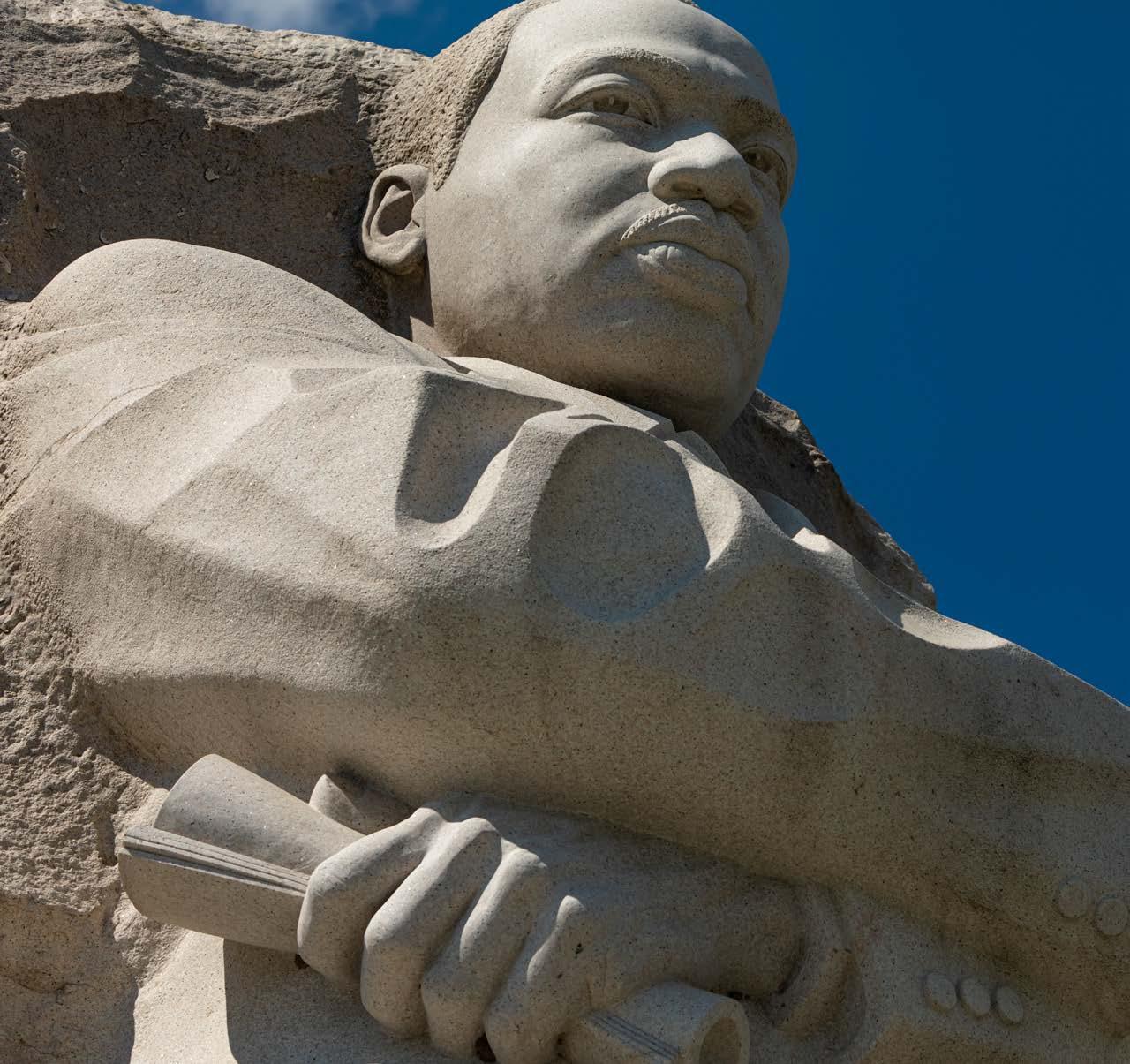
In recent years, there have been active efforts in many states to curtail or outright ban the teaching of holistic, accurate American history, particularly as it relates to the history of Black Americans, and concepts broadly related to diversity, equity, and inclusion. These efforts have been characterized as a “war on woke” culture in an effort to diminish the historical context of race in America and its impact upon all aspects of American society.
Organizations including the African American Policy Institute have demonstrated that the “war on woke” actually represents efforts against Black knowledge, history, and other marginalized communities. Since
2021, 46 states have introduced some form of restrictive measure regarding racial justice, critical race theory, and the teaching of racial injustice in American history; to date, 21 states fully passed some version of these measures. In 2023, for example, Florida’s Department of Education rejected an advanced placement course on African American studies, citing it indoctrinated students to a political agenda.
The impacts of these efforts are myriad, including denying Black students access to accurate history that affirms their identities and cultural contributions to society, denying white students knowledge that helps to
dispel negative stereotypes about Black people and other people of color, and creating negative climates for Black educators who face heightened scrutiny and are actively silenced. Additionally, these efforts serve to further entrench and justify actions against Black students, such as the disproportionate use of school discipline policies against Black students, particularly black girls.
As part of the ongoing attacks on Black history, there has been a concerted effort to ban books in Kindergarten through 12th grade (K-12) schooling. In the fall of 2024 alone, more than 4,300 books were banned—more than the total number of books banned during the entire previous school year. These bans overwhelmingly target books on race or racism, books that center characters of color, and books with LGBTQ+ characters, utilizing disparaging rhetoric about “porn in schools,” “critical race theory,” “woke ideology,” and efforts toward diverse, inclusive library collections. During the 2021–22 and 2022–23 school years, books about race and racism, and those featuring
Prioritites:
• Pass Condemning Revisionist Education and Revisionist History in Relation to the African American Experience (H.Res, 615). This proposed legislation aims to safeguard the integrity of the American education system and “tells the full narrative of United States history and African American history, acknowledging the experiences and plight of Black people.”
• Ensure the mission of the U.S. Department of Education to guarantee a free, public, quality education to all students by maintaining the accountability of all classrooms to protect K-12 curricular development from political interference that seeks undermine the full teaching of all aspects of American history
• Uphold the constitutional and civil rights of all students, particularly the protection of Black and other vulnerable communities from discrimination and structural inequities in the classroom, by prohibiting states’ ability to ban public education
characters of color, comprised 37 percent of all book bans.
In addition to these severe limitations on teaching, as well as bans on Black history courses and books, some states have attempted to revise American history through mischaracterization, false narratives, and omission of factual occurrences. Notably, the Florida State Board of Education released new standards for history that include language claiming that slavery was beneficial to Black Americans because it helped them acquire useful skills.
This revisionist history threatens the integrity of American education, undermining the right of all students— particularly to Black students—who deserve a full, accurate history that does not downplay the significance and impact of the most central features of American history: the enslavement of African Americans beginning in colonial times followed by their continued subjugation under discriminatory post-Civil War Jim Crow law and practices that continue to reverberate today.
Resources:
• “Black Studies as the Study of the World: A PK-12 Black Studies Curriculum for New York City Public Schools, (Columbia University: Black Education Resource Center).
• “CRT Summer School,” African American Policy Forum.
• “Freedom to Learn Anti-Woke Infographics,” African American Policy Forum.
instruction on topics such as systemic racism and structural inequalities—the knowledge of which is foundational to United States history and civics lessons, and are necessary to instill democratic values and to facilitate meaningful participation in a multiracial democracy
• Reintroduce and pass the Books Save Lives Act, which would counteract the rise in book bans and help ensure an inclusive learning environment for all students. Specifically, the legislation would:
• Ensure primary and secondary schools have a library with a trained librarian
• Require public libraries and school libraries to maintain a diverse collection of books
• Classify discriminatory book bans as violations of federal civil rights laws
• Direct the Government Accountability Office to report on the effect of book bans on underrepresented communities
• “In Defense of the Truth,” NAACP Legal Defense and Educational Fund.
• “Whose History? How Textbooks Can Erase the Truth and Legacy of Racism,” (NAACP Legal Defense and Educational Fund: Thurgood Marshall Institute).

In recent decades, the wealth gap between Black and white Americans has increased significantly, with the median wealth of white American families being more than six times that of the median wealth for Black American families. This gap has major implications, including career opportunities, home ownership, and generational wealth. A major contributor to the racial wealth gap continues to be student loan debt, as this debt burden falls disproportionately on students of color.
Student loan forgiveness could significantly narrow the racial wealth gap. For many Black students in particular, earning a college degree is among the most powerful and transformative avenues for disrupting intergenerational cycles of poverty and for narrowing racial disparities in wealth and income. Importantly, wealth and other economic disparities cost the U.S. economy trillions of dollars in growth, Conversely, closing the racial wealth gap would actually increase the U.S. economic growth.
Approximately 8.5 million Black people in the United States have student loans. With or without a degree, Black people are twice as likely as their white counterparts to default on their student loans, owing to factors such as disparities in wealth and income, and being targeted by for-profit schools with lower graduation rates, higher costs, and lower-quality degrees. Black students also typically owe more than white students; Black borrowers take out an average of $39,500 in student loans, while white students borrow an average of $29,900.
Prioritites:
• Restore and expand the benefits available through the Saving on A Valuable Education (SAVE) Plan
• Implement student debt relief programs to reduce inequities between borrowers
For all degree types across all levels, Black borrowers (and borrowers of color) are more likely to take out educational loans and borrow more than their white peers. Data from the U.S. Department of Education indicates that around 86 percent of Black students take out student loans compared to only 68 percent of white students. Furthermore, student loan debt significantly impacts attendees of Historically Black Colleges and Universities, primarily due to the historic underfunding of these institutions combined with rising postsecondary education costs. This debt severely limits career opportunities and homeownership for HBCU graduates.
The long-term effects of disproportionate student loan debt exacerbate the racial wealth gap, diminishing educational and socioeconomic returns over the life course. One study shows that the Black-white disparity in student loan debt more than triples four years after graduation. Student loan debt also negatively impacts the ability to save for retirement and can actually delay retirement, with one study demonstrating that Black and other communities of color face higher rates of loan payment delinquency due to the same structural factors that lead them to take out loans in the first place, meaning that their retirement is in jeopardy. Additionally, student loan debt also has a negative impact on mental health outcomes, leading to feelings of depression and increased stress and worry.
Resources:
• “$50K & Beyond,” NAACP.
• “Black Student Debt Hub,” (Washington: EdTrust).
• “Civil Rights Principles for Student Loan Debt Cancellation,” (NAACP Legal Defense and Educational Fund: Thurgood Marshall Institute).
• “Student Debt Cancellation Is Progressive: Correcting Empirical and Conceptual Errors,” (New York: The Roosevelt Institute).

Despite being heralded as the “great equalizer,” education still has significant gaps, particularly for Black students. Earning a college degree is one mechanism that increases socioeconomic attainment and mobility, yet Black students still face significant challenges in accessing postsecondary education. Black Americans earn postsecondary degrees at lower rates than the national average; in 2022, Black degree attainment was about 10 percent lower than the national average, according to the US Census Bureau
While Black student graduate enrollment has registered about a 6 percent increase in recent years, undergraduate enrollment has declined by about 27 percent over the same time frame. Importantly, declining enrollment is not the only implication for Black student—those who attend less racially diverse institutions are also more likely to experience racism and discrimination, feel disrespected and physically and psychologically unsafe, and face disproportionate financial burdens.
In June 2023, the U.S. Supreme Court ruled current race-based affirmative action policies violate the Equal Protection Clause of the 14th Amendment, which has many negative implications for Black students, chief among them equitable access and enrollment. One study found that state bans on race-conscious admissions programs reduced Black enrollment at top-50 public colleges by about one-third. Among the nation’s most selective public institutions, most enroll a smaller percentage of Black students now than they did 20 years ago.
While race can no longer be used as a factor in admissions, these same institutions can and do continue to utilize preferential policies such as legacy admissions that disproportionately advantage wealthy and white students, furthering disparities. Black students are more likely to attend public rather than private postsecondary institutions, according to the National Center for Education Statistics. Historically Black Colleges and Universities serve as key points of entry and access for Black students. Although HBCUs make up only 3 percent of the country’s colleges and universities, they enroll 10 percent of all African American students and produce almost 20 percent of all African American graduates.
Black students often face significant barriers to college entry and success, including lacking access to college
readiness courses and Advanced Placement courses, being more likely to take remedial courses than other students, and lower standardized test scores—all of which is often exacerbated by the continued segregation of classrooms along racial and economic lines. These factors all contribute to lower access to postsecondary education and the attainment of postsecondary degrees.
Funding postsecondary education is also a major barrier for Black students. Black students carry the largest student loan debt burden among any group. According to the National Postsecondary Student Aid Survey, 71 percent of Black students received some form of federal Title IV financial aid in the 2019–20 academic year, compared to 55 percent of all students
Prioritites:
• Advocate against the use of legacy admissions policies, which further disparities in access
• Enforce meaningful consequences for colleges that after given time, resources, and support, fail to improve their efforts to provide equitable college opportunity and outcomes
• Encourage college campuses to provide equitable college opportunities to all students, particularly students of color and students from low-income families, through the use of more effective and holistic admissions policies that consider the breadth of student qualifications and experiences
• Improve higher education data to create greater transparency and understanding of opportunity, value, and outcomes
• Invest in colleges that are committed to equity and have been historically under-resourced so that they can implement evidence-based strategies to support student success, in particular HBCUs, which have been systemically underfunded
• Reauthorize the Higher Education Act, in particular the sections relating to strengthening HBCUs, predominantly Black institutions, and other minority-serving institutions
• Safeguard and strengthen student consumer protection policies such as gainful employment and borrower defense to protect students from predatory colleges and universities
Resources:
• “A Call to Action for HBCU Investment,” (Washington: The Brookings Institution)
• “Affirmative Action in Higher Education: The Racial Justice Landscape After the SFFA Cases ,” NAACP Legal Defense and Educational Fund.
• “Black Students in Higher Education,” (Washington: Postsecondary National Policy Institute).
• “Creating Accountability for College Access and Success: Recommendations for the Higher Education Act and Beyond, (Washington: EdTrust).
• “How Does Affirmative Action Improve Democracy?.” (NAACP Legal Defense and Educational Fund: Thurgood Marshall Institute).
• “Navigating the Affirmative Action Rulings: An In-Depth Analysis,” Lawyers’ Committee for Civil Rights Under the Law.
• “Principles for Racial Equity in Higher Education,” Lawyers’ Committee for Civil Rights Under the Law.
• “Race-Conscious Affirmative Action: What’s Next, (Washington: Georgetown University Center on Education and the Workforce).
• “Renewing the Promise of Brown: A Call to Secure Equal Educational Opportunities for All,” (NAACP Legal Defense and Educational Fund: Thurgood Marshall Institute).
• “The State of Black Students at Community Colleges,” (Washington: Joint Center for Political and Economic Studies).
• ‘Toward a More Equitable Future for Postsecondary Access,” (Arlington VA: The National Association for College Admission Counseling and the National Association of Student Financial Aid Administrators).

While Black student graduate enrollment has registered about a 6 percent increase in recent years, undergraduate enrollment has declined by about 27 percent over the same time frame.

Access to healthcare and the coverage of costs of healthcare remain a problem in the United States despite reforms to healthcare policies stretching from the introduction of Medicare and Medicaid in the 1960s to the Children’s Health Insurance Program in the 1990s to the passage of the Affordable Care Act in 2010.

Black maternal health and the health of newborn Black Americans also remains unequitable in the United States due to the persistence of racial bias in healthcare.
One broad socioeconomic reason for racial disparities in healthcare in the United States is the legacy and continuing presence of pollution and other climate dangers in and around predominantly Black communities. Recent efforts to ensure greater environmental justice across the nation to address these healthcare disparities are now under serious threat by the second Trump administration.
Health insurance provides a means for financing an individual’s healthcare expenses. Health insurance offers access to medical care, protection from high unexpected medical costs, and more economic stability for people and families. While most Americans have private health insurance, primarily through their employers, others obtain coverage via government programs, including Medicare, Medicaid, The Children’s Health Insurance Program, and healthcare insurance exchanges under the Affordable Care Act.
Still, some Americans do not have health insurance coverage at all. In particular, 11.4 percent of workingage non-Hispanic Black Americans are uninsured. A 2022 Joint Center survey of Black respondents found that health and healthcare costs gravely impacted their financial aspirations. In particular, participants expressed the need to expand health care coverage given the heavy burden that health care costs place on them. For some respondents, healthcare costs do not allow them to focus on other aspirations, such as having the money for an emergency or being debtfree.
Prioritites:
• The U.S. Department of Health and Human Services should ensure that no person is subject to discrimination when accessing or receiving health care due to their race, color, national origin, sex, age, or disability
• The U.S. Department of Justice and the U.S. Department of Health and Human Services should ensure that no person is targeted for investigation, arrest, and detention for seeking, obtaining, providing, or facilitating lawful reproductive healthcare
• Enact comprehensive federal privacy legislation that prioritizes civil rights and prohibits discriminatory uses of personal data, including
Even when Black Americans have access to health insurance, many Black families face geographic barriers, living in areas with limited access to doctor’s offices and other healthcare facilities, and are more likely than white adults to report being treated unfairly because of their race while seeking care for themselves or their family members. A 2022 Pew Research Center survey found that a majority of Black adults say less access to quality medical care in their neighborhoods is a major reason why Black people in the United States generally have worse health outcomes than other adults.
The same Pew survey also found that almost half of respondents say that a major reason why Black people generally have worse health outcomes is because healthcare providers are less likely to give Black people the most advanced medical care. An almost equal share (47 percent) says hospitals and medical centers give lower priority to their well-being is a major reason for differing health outcomes.
healthcare data
• Expand mobile health services that serve people living and/or working on the streets and provide sliding-scale services
• Expand telehealth access through public and private insurance coverage, increased broadband access, and public education
• It is critically important for Members of Congress to underscore the impact of recent legislative proposals that, if passed, would cause people to lose health coverage through Medicaid, Medicare, and Affordable Care Act, increase enrollees’ healthcare costs, and destabilize healthcare providers.
Resources:
• “Effect of the Affordable Care Act on Racial and Ethnic Disparities in Health Insurance Coverage,” (National Library of Medicine).
• “Health Insurance Coverage in the United States in 2022,” (Washington: U.S. Census Bureau).
• “Health Coverage by Race and Ethnicity, 2010-2023,” (KFF).
• “How Recognizing Health Disparities for Black People is Important for Change,” (KFF).
• “Racial and Ethnic Health Inequities and Medicare,” (KFF).
• “Racial and Ethnic Disparities in Health Care Use and Access Associated With Loss of Medicaid Supplemental Insurance Eligibility Above the Federal Poverty Level,” (National Library of Medicine).
• “Residential Segregation and the Availability of Primary Care Physicians,” Journal of Health Services Research (Bethesda MD: National Library of Medicine).
Over the past two decades, the U.S. maternal mortality rate has not improved, while maternal mortality rates have decreased for other regions of the world, according to a recent World Health Organization report. Social determinants of health, healthcare access, and bias all play a significant role in health outcomes. Moreover, significant racial and ethnic disparities persist in both the rate of women in the United States who die due to pregnancy complications or delivery and the rate at which women experience negative health consequences due to unexpected pregnancy or childbirth outcomes.
Compared to other racial or ethnic groups, Black women experience the highest rates of nearly all of the Centers for Disease Control and Prevention’s severe maternal morbidity indicators. Black women in the United States are 3 times to 4 times more likely to die from pregnancyrelated complications than white women. The maternal mortality rate for Black pregnant women is the highest in the nation, at 69.9 deaths per 100,000 live births. The infant mortality rate among Black Americans is 2.4 times
Prioritites:
• Advocate for federal and state laws requiring paid family leave for all new parents and guardians, including adoptive parents and parents who are fostering children
• Eliminate maternity care deserts, which can be done through numerous methods, including but not limited to expanding midwifery licensure and access, scaling up telehealth systems, and implementing perinatal regionalization
• Encourage states to extend Medicaid and CHIP benefits eligibility for pregnant individuals from 60 days to 12 months postpartum, an option made permanent under the Consolidated Appropriations Act of 2023
• Expand Medicaid and private insurance plans to authorize reimbursement of community doulas for
the rate for white Americans, and Black pregnant women have higher rates of preterm birth than their white counterparts.
Several factors contribute to these disparities, such as variations in quality healthcare, underlying chronic conditions, structural racism, and implicit bias in the medical professions. Social determinants of health prevent many people from communities of color from having fair opportunities and experiences within the healthcare system.
Even after giving birth, Black women face additional disparities that persist post-partum. Hospital maternity wards serving Black populations are less likely to help Black women initiate breastfeeding or offer lactation support. Black women are more likely than other racial and ethnic groups to return to work earlier than 12 weeks and contend with inflexible work hours or conditions that make nursing more challenging.
expectant parents and lactation services
• Extend postpartum eligibility for the Special Supplemental Nutrition Program for Women, Infants, and Children (WIC) to 24 months
• Improve safety in maternal healthcare by implementing standardized care practices across health systems and hospitals
• Permanently expand the Child Tax Credit to establish a universal child allowance
• Strengthen pregnancy accommodations and workplace protections for domestic workers, entrepreneurs, and other workers with unique labor environments
Resources:
• “2023 State of Black Health Policy Platform,” (Durham NC: The Center for Black Health and Equity).
• “In Policy and Practice, A Policy Agenda for the Black Maternal Health, Rights, and Justice Movement,” (Black Mamas Matter Alliance).
• “Maternal Mortality Rates in the United States, 2021,” (Atlanta: Centers for Disease Control and Prevention).
• “Provisional Data From the 2022 Period Linked Birth/ Infant Death File,” (Atlanta: Centers for Disease Control and Prevention).
• “Trends in maternal mortality 2000 to 2017,” (Geneva: World Health Organization).
Climate change is one of the most paramount public health issues of our time. Black communities are particularly vulnerable to the effects of climate change. Historical and systemic factors, including the proximity of carbonemitting plants, government policies, and racist practices, have significantly impacted the health of Black people in the United States.
Black Americans are exposed to higher levels of pollution in part due to historic redlining and segregation. More than 1 million Black Americans live within a half mile of oil or natural gas facilities, exposing them to harmful emissions and increasing their health and cancer risks. This exposure has severe health effects that may account for the higher rate of asthma among Black children, with approximately 13.4 percent of Black American children having asthma compared to only 7.3 percent of white children.
Additionally, Black communities are particularly vulnerable to the effects of climate change. According to the recent National Climate Assessment, Black communities will face more flooding in the future than any other community. And more than 6.7 million Black Americans reside in the 91 US counties with oil refineries, which further increases their exposure to pollutants. As a result of these practices, these Black neighborhoods
Prioritites:
• Call on national leaders to strengthen and enforce regulations on industrial pollution
• Invest in environmentally just infrastructure, including renewable energy sources, climate emergency response systems, resilient architecture and urban planning, and accessible, green spaces, particularly in Black and redlined communities
• Involve and prioritize Black communities in policymaking to place their experiences at the forefront of the environmental talks
face significant concerns regarding toxic waste, industrial pollution, air quality, water contamination, and climate issues, which impact air quality, water quality, and food insecurity.
The designation of Black communities as “sacrifice zones” by the federal and state and local governments has led to significant health disparities, according to the Center for Black Health and Equity.
Environmental justice policy solutions must address more than preservation and regulation—they have to be rooted in addressing systemic racism and the unique needs of Black communities.

• Pass a federal or state laws recognizing the human right to water, which would fund and create legal standing for equitable access
• Prioritize allocating resources to communities that experience the greatest impacts of climate change
• Support research and technological advancements that cut air pollution
• Update the federal Clean Water Act and Clean Air Act focusing on disability justice, public health, and economic development for African Americans
Resources:
• “2023 State of Black Health Policy Platform,” (Durham NC: The Center for Black Health and Equity).
• “Centering Black Voices at COP28: A Call for Environmental Justice,” The Crisis, (NAACP).
• “Fifth National Climate Assessment,” (U.S. Global Change Research Program).
• “Fumes Across the Fence-Line,” (NAACP: Clean Air Task Force).
• “Racial Disparities and Climate Change,” (Princeton University: Princeton Student Climate Initiative).
• ‘This Is an Emergency’: 1 Million African Americans Live Near Oil, Gas Facilities, (Inside Climate News).
In 2022, 1 in 5 Black people in the United States experienced food insecurity. According to the U.S. Department of Agriculture, nearly 9 million Black people could not access enough food to live a healthy, active life. Additionally, Black families are far more likely to experience poverty.
While the United States has an overall poverty rate of 11.5 percent, within Black communities, the poverty rate is 17.1 percent. Contributing to these baleful food trends, food deserts and food swamps have significantly contributed to this disparity. Food deserts are areas with little access to healthy food. Food swamps are areas with significantly more unhealthy food retailers than healthier alternatives. Communities in and around these food deserts and swamps lack access to affordable, healthy food options, which negatively impacts the dietary habits and overall health of the residents of these communities. Due to historical and systemic inequalities, such as racial residential segregation, Black communities are especially impacted.

Prioritites:
• Adopt local livestock ordinances to support urban growers legally and safely keeping livestock in urban agriculture operations
• Companies should expand access to goods and services and create offerings tailored to the needs of Black communities
• Expand access to federally funded social safety net programs such as Supplemental Nutrition Assistance Program.
• Implement programs that provide Black communities with more access to affordable and healthy food options
• Provide funding for community-led and local solutions, such as community gardens
• Provided land access subsidies for Black urban and rural growers
Resources:
• “The Black consumer: A $300 billion opportunity,” (McKinsey & Co.)
• “Food Insecurity in Black Communities,” (Feeding America).
• “Racial Differences in Perceived Food Swamp and Food Desert Exposure and Disparities in Self-Reported Dietary Habits,” International Journal of Environmental Research and Public Health (Bethesda MD: National Library of Medicine).


The judicial system in the United States is often referred to as the criminal justice system, but Black Americans have faced unjust discrimination in the legal system for decades.
While unconscious bias is a factor, the policies and institutions around crime systematically disadvantage Black people, from “broken windows” policing practices to stand your ground laws.
After the murder of George Floyd in 2020, several states and localities passed legislation to create policing alternatives that are community-led and center public safety. The second Trump Administration has discussed plans to increase federal law enforcement’s presence in cities and create stricter sentences for non-violent drug crimes. Every level of government must address racial disparities in the criminal legal system. The following section outlines the current status of the judicial system and policy recommendations to create a more fair and just legal system for all.
Black individuals often face disproportionate scrutiny and suspicion by law enforcement based on their race, leading to higher rates of stops, searches, and arrests. Data from the 2020 Stanford Open Policing Project indicates that Black drivers are approximately 20 percent more likely to be stopped by police compared to white drivers. Additionally, Black drivers are searched about 1.5 to 2 times more frequently than white drivers, even though white drivers are more likely to be found with contraband during these searches.
Just one case in point from one city in one state: Between 2004 and 2012, Black individuals accounted for about 53 percent of stops in New York City, although they made up only around 23 percent of the population. In contrast, white individuals, who constituted
about 33 percent of the population, accounted for only about 9 percent of stops, according to the New York Civil Liberties Union. Similar trends are evident across the nation.
These justice system disparities are similarly the case in drug possession cases. In a 2019 report, the Sentencing Project reported that police made more than one million drug arrests, with 29 percent related to marijuana possession. Despite Black individuals comprising only 14 percent of the U.S. population and no significant racial differences in drug use rates, more than one in four people of those arrested for drug law violations were Black people. These statistics underscore significant racial disparities in policing and highlight systemic issues within law enforcement practices in the United States.

• Establish independent oversight bodies to investigate and hold accountable police officers involved in misconduct, including excessive use of force and fatal shootings
• Fund research and policy analysis to identify the root causes of racial disparities in policing and develop evidence-based solutions
• Implement mandatory bias training for police officers to reduce discriminatory practices during stops and searches
Resources:
• “One in Five,” (The Sentencing Project).
• “Framework for Public Safety,” (NAACP Legal Defense and Educational Fund).
• “Say Her Name: Resisting Police Brutality Against Black Women,” (Center for Intersectionality and Social Policy Studies: African American Policy Forum). Prioritites:
• Increase transparency by requiring law enforcement agencies to collect and publicly report data on all stops, searches, and arrests, disaggregated by race and ethnicity
• Pass legislation that increases accountability for law enforcement misconduct, enhances transparency and data collection, and establishes best practices and training requirements for police officers by enacting the George Floyd Justice in Policing Act

Black individuals are overrepresented in the U.S. prison population, often due to harsh sentencing laws, biased policing, and socioeconomic factors. Despite comprising only about 14 percent of the total population, Black individuals account for approximately 32 percent of the total sentenced prison population as of 2022, according to the U.S. Bureau of Justice Statistics. Black male offenders specifically receive sentences that are, on average, 19.1 percent longer than white male offenders for the same crimes according to the U.S. Sentencing Commission.
Additionally, data from the Prison Policy Initiative reveals that in large urban areas, Black felony defendants are more likely than white defendants to be held pretrial. Young Black men are about twice as likely to be held in jail before their trial than white defendants. Pretrial detention can lead to longer sentences, as individuals may be more likely to accept plea deals to avoid prolonged detention. Black individuals tend to receive longer sentences than their white counterparts for similar offenses, contributing to the disproportionate incarceration rates among Black populations. This perpetuates cycles of poverty and disenfranchisement within Black communities.
• Create risk-assessment tools to determine eligibility for pretrial release and the expansion of alternative forms of pretrial supervision
• Eliminate mandatory minimum sentences and the establishment of sentencing guidelines that prioritize rehabilitation and proportionality
Prioritites: Resources:
• “How race impacts who is detained pretrial,” Prison Policy Initiative.
• “The Truth about Crime Statistics: Avoiding Distortions and Improving Public Safety,” NAACP Legal Defense and Educational Fund.
• Implement bail reform measures to reduce reliance on cash bail and address the disproportionate impact of pretrial detention on Black individuals
Black youth are more likely to be arrested, prosecuted as adults, and sentenced to adult prison compared to their white counterparts for similar offenses, contributing to the school-to-prison pipeline. During the 2017–2018 school year, nearly 230,000 students across the country were referred to law enforcement by schools, and about 25 percent of those referrals led to arrests. In general, Black youth are more than four times as likely as white youth to be detained or committed to juvenile facilities, according to data from the Sentencing Project.
In every state, Black youth also are more likely to be incarcerated than their white peers, with Black youth being about five times as likely to be incarcerated nationwide. Nationally, the youth placement rate in juvenile correctional facilities was 74 per 100,000 in 2021, but the Black youth placement rate was 228 per 100,000, compared to the white youth placement rate of 49 per 100,000.
In U.S. court systems, Black youth comprised two-thirds of mandatory and discretionary direct file transfers to adult court in 2016, even though they represented only 21 percent of the youth population. Additionally, judges gave Black youth prison sentences that were longer than the sentences given to white youth for the same type of offense. These disparities highlight significant racial biases within the juvenile justice system, reflecting systemic inequities that begin as early as school referrals and continue through sentencing and incarceration.

Prioritites:
• Create sentencing guidelines that consider mitigating factors such as socioeconomic background and history of trauma
• Establish independent oversight bodies to monitor the juvenile justice system and investigate complaints of racial bias or misconduct
• Hold law enforcement agencies, juvenile courts, and correctional facilities accountable for any violations of civil rights or due process
• Implement policies that reduce involvement of law enforcement in school disciplinary matters and encourage alternative approaches such as restorative justice practices and counseling to address behavioral issues
• Raise the age of juvenile jurisdiction to ensure that young offenders are placed in the juvenile justice system rather than being automatically transferred to adult court
Resources:
• “Black Disparities in Youth Incarceration,” The Sentencing Project.
• “Ending Girls’ Incarceration Initiative,” (New York: Vera Institute for Justice).
Black individuals are disproportionately arrested for cannabis-related offenses compared to their white counterparts despite similar rates of usage across racial groups. Black Americans are arrested for violating marijuana possession laws at nearly four times the rate of whites, yet both groups consume marijuana at roughly the same rates. In Washington DC, from 2015 to 2019, a staggering 89 percent of cannabis-related arrests targeted Black Americans. Similarly, a 2021 analysis of marijuana-related arrests in New York City revealed that people of color accounted for 94 percent of those arrested in 2020 across the city’s five boroughs.
Cannabis-related arrests and convictions have long-lasting impacts, including barriers to employment, housing, and education. Cannabis legalization can create economic opportunities, including job creation and entrepreneurship. Further, expunging prior cannabis-related convictions can address historical harms and allow Black individuals to move forward without the stigma and barriers associated with a criminal record.

Prioritites:
• Allocate revenue generated from legalized cannabis sales to reinvest in communities disproportionately impacted by the war on drugs
• Create social equity programs to promote diversity and inclusion in the legal cannabis industry
• Establish processes for expunging prior cannabisrelated convictions from individuals’ criminal records, particularly for offenses that are no longer considered illegal under recent cannabis laws
• Implement policies to expunge prior marijuana
Resources:
• “A Tale of Two Countries: Racially Targeted Arrests in the Era of Marijuana Reform”, American Civil Liberties Union.
convictions, particularly for non-violent offenses, and provide support for communities disproportionately affected by past enforcement
• Pass legislation to decriminalize cannabis and provide for the expungement of criminal records related to non-violent cannabis offenses
• Pass the Secure and Fair Enforcement Banking Act, which will create protections for banks that provide financial services to state-sanctioned marijuana businesses
Black neighborhoods often have higher rates of poverty and unemployment, which can contribute to higher crime rates and strained relationships with law enforcement. According to the U.S. Census Bureau, the poverty rate for Black Americans was 17.8 percent in 2023, compared to 7.7 percent for non-Hispanic white Americans. As other sections of this report note, Black communities often face disinvestment in social services, education, and healthcare, while experiencing over-policing and under-resourced public safety initiatives.
Community policing initiatives that prioritize building trust and collaboration between law enforcement and Black communities have shown promise in reducing crime and improving public safety. Reimagining public safety in Black communities involves investing in mental health crisis response teams and diversion programs that prioritize de-escalation and access to treatment.

• Develop comprehensive reentry programs that support the successful transition of formerly incarcerated youth back into their communities
• Implement diversion programs that provide alternatives to incarceration for individuals with mental health or substance abuse issues
• Invest in job creation, small business development, and affordable housing initiatives that include targeted economic incentives, grants, and loans to support businesses and entrepreneurs in Black neighborhoods
• Invest in mental health crisis response teams to respond to situations involving individuals experiencing mental health crises
Resources:
• “Getting It Right: Building Effective Civilian Review Boards to Oversee Police,” Campaign Zero.
• “New Era of Public Safety: A Guide to Fair, Safe, and Effective Community Policing,” Leadership Conference on Civil and Human Rights.
• “Redefining Public Safety Initiative,” (New York: Vera Institute of Justice). Prioritites:
• Pass The People’s Response Act (HR 4699) to center an inclusive, holistic, and health-centered approach to public safety by creating a Division on Community Safety within the U.S. Department of Health and Human Services
• Pass legislation to enable states to reinstate access to critical healthcare services through Medicaid for incarcerated individuals up to 30 days before release
• Reallocate resources from traditional law enforcement toward community-led public safety initiatives, including funding for violence prevention programs, youth mentorship initiatives, and conflict resolution/mediation training

According to the U.S. Census Bureau, the poverty rate for Black Americans was 17.8 percent in 2023, compared to 7.7 percent for non-Hispanic white Americans.


As
technology increasingly shapes access to education, employment, and economic opportunities, persistent disparities in broadband access and affordability, tech industry representation, AI bias, and content moderation continue to disproportionately impact Black communities.
Broadband access remains a major challenge in many rural Black communities due to inadequate infrastructure, leaving households without reliable highspeed internet. Affordability is a separate issue, as high service costs prevent many low-income households from maintaining broadband even where it is available. Programs like the Affordable Connectivity Program (ACP) help reduce costs, while the Broadband Equity, Access, and Deployment (BEAD) Program aims to expand infrastructure in underserved areas. However, without sustained investment in both expanding infrastructure and ensuring affordability, Black communities risk continued digital exclusion.
Beyond broadband, Black professionals remain significantly underrepresented in the tech industry, particularly in technical and leadership roles. This lack of diversity affects how technology is designed, whose concerns are prioritized, and which communities benefit from innovation. Without meaningful inclusion, key issues like algorithmic bias, digital access, and platform accountability are often neglected. Expanding opportunities for Black professionals in tech—through targeted hiring, career advancement initiatives, and STEM education—is essential to fostering a more inclusive and equitable industry.
At the same time, bias in AI and ineffective content moderation continue to disproportionately harm Black communities. AI-driven technologies, such as facial recognition and automated decision-making systems, frequently misidentify Black individuals, leading to wrongful arrests, hiring discrimination, and biased financial assessments. Meanwhile, social media platforms fail to adequately address online harassment and misinformation, exposing Black users to harmful content. Stronger oversight, ethical AI development, and greater accountability for tech companies are necessary to ensure digital spaces are safe and fair. The following sections examine these challenges and outline priorities for driving meaningful change.

Significant disparities in broadband access continue to impact Black communities, with fewer Black households having access to high-speed internet compared to their white counterparts. This digital divide exacerbates educational and economic inequities, further marginalizing these communities. According to the Joint Center for Political and Economic Studies, 38 percent of African Americans in the Black Rural South do not have home internet access, compared to 23 percent of white residents in the same region. This disparity is most severe in rural counties across Alabama, Georgia, Mississippi, and other southern states where at least 35 percent of the population is Black.
The lack of broadband infrastructure, affordability issues, and insufficient federal support create systemic
Prioritites:
• Enhance telehealth services by expanding internet access to ensure equitable healthcare through telehealth, especially in rural areas
• Expand broadband infrastructure by prioritizing the deployment of high-speed internet to underserved rural Black communities
• Improve access to education and training by supporting digital literacy initiatives and access to online education and job training programs
barriers and are leading to a new digital underclass among Black and white Americans alike. These factors limit students’ ability to access online resources, restrict job opportunities for adults, and cut off access to telehealth services, which have become critical for overall well-being. Additionally, without additional funding for programs such as the Affordable Connectivity Program, new infrastructure from initiatives including the Broadband Equity, Access, and Deployment (BEAD) program that will make broadband access possible in rural Black neighborhoods may be negatively affected, which will ultimately impact low-income and rural Black households. Addressing both infrastructure and affordability is essential to closing the digital divide.
• Increase access to high-speed internet infrastructure build out measures by supporting programs such as BEAD and broadband affordability measures including the Affordable Connectivity Program that allow low-income households to access broadband services at a lower rate
Resources:
• “Affordability & Availability: Expanding Broadband in Black Rural South,” (Washington: Joint Center for Political and Economic Studies).
• “The Broadband Equity, Access and Deployment (BEAD) Program Overview,” Internet for All.
• Digitally Invisible: How the Internet Is Creating the New Underclass, (Washington: The Brookings Institution).
• “Empowering Black Communities: The Essential Role of the Affordable Connectivity Program in Enhancing Digital Equity,” (Washington: Joint Center for Political and Economic Studies).
The high cost of broadband disproportionately impacts Black households, especially those in lower income brackets. According to the U.S. National Telecommunications and Information Administration, 22 percent of offline Black households cited cost as the main barrier to broadband access, compared to 16 percent of white households. This issue is especially severe in the Black Rural South, where 60.8 percent of Black families earn less than $35,000 annually. This affordability gap limits access to critical digital resources, deepening economic inequalities.
Pew research shows that 38 percent of Black Americans worry about affording their internet bills, restricting their ability to access job applications, online education, and telehealth services. Without affordable broadband, many Black families are left behind in an increasingly digital world. The loss of funding for the Affordable Connectivity Program threatens to further widen the digital divide. The program has been essential in helping low-income families afford internet access, and without it, many Black households may be pushed offline, losing access to essential services. Sustainable funding is needed to ensure broadband affordability and digital inclusion.

Prioritites:
• Address affordability barriers by reducing broadband costs for households in lower income brackets to ensure equal access to the internet
• Develop initiatives to close the affordability gap, ensuring that Black families can access essential online services such as education, employment, and healthcare
• Refund and expand the Affordable Connectivity Program to make broadband services affordable for low-income households struggling to maintain their internet services
Resources:
• “53% of Americans Say the Internet Has Been Essential During the COVID-19 Outbreak,” (Washington: Pew Research Center).
• “FACT SHEET: As Affordable Connectivity Program Hits Milestone of Providing Affordable High-Speed Internet To 23 Million Households Nationwide, Biden-Harris Administration Calls on Congress to Extend Its Funding,” (Washington: The White House).
Black professionals are vastly underrepresented in the tech industry, particularly in technical roles and senior leadership positions. Despite making up 12 percent of the US workforce, Black individuals represent only 8 percent of tech employees and just 3 percent of technology executives, according to a recent McKinsey analysis. This gap is expected to widen over the next decade, as tech jobs are projected to grow faster than the rate of Black talent entering the industry.
This lack of representation affects not only career opportunities for Black individuals but also the inclusivity of the products and services developed by tech companies. Diverse perspectives are essential for creating technology that serves all communities effectively and equitably. Without Black representation in the tech ecosystem, solutions addressing platform accountability, algorithmic fairness, and broadband access and affordability are less likely to consider the unique challenges faced by Black communities.


• Develop pathways for Black professionals to access senior leadership roles, including executive mentorship and sponsorship programs
• Ensure diverse teams are involved in creating technology that impacts society to better address issues such as algorithmic fairness and platform accountability
• Increase Black representation in tech roles by
Prioritites: Resources:
• The Number of Tech Jobs is Steadily Increasing—But Representation of
focusing on recruitment, retention, and promotion of Black talent in technical positions across the tech industry
• Support initiatives that provide Black individuals with the skills and education needed to thrive in the fast-growing tech sector, including coding boot camps and Science, Technology, Engineering, and Math programs
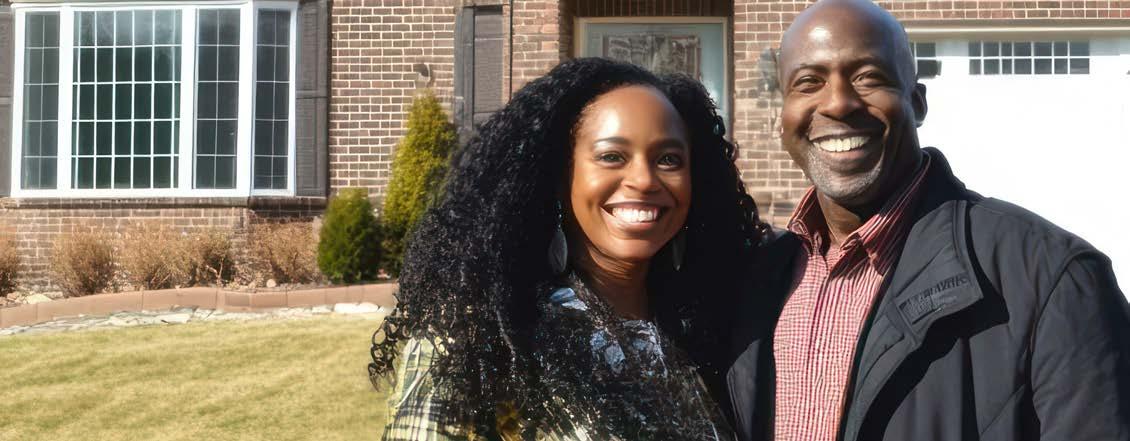
Racial bias in AI and new technologies disproportionately impacts Black communities, often perpetuating and amplifying existing disparities. Facial recognition technologies, for example, have a significant error rate when identifying darker-skinned individuals, leading to harmful consequences such as wrongful arrests. Additionally, AI systems used in hiring, lending, and law enforcement often discriminate against Black individuals, further entrenching systemic inequities.
Books including Ruha Benjamin’s Race After Technology: Abolitionist Tools for the New Jim Code, Safiya Noble’s Algorithms of Oppression: How Search Engines Reinforce Racism, and Joy Buolamwini’s Unmasking AI: My Mission to Protect What is Human in a World Full of Machines,” highlight how biased algorithms reinforce discrimination in various sectors and how technology can reinforce social inequalities. To address these issues, software developers and policymakers alike must prioritize fairness, accountability, and transparency in AI systems.
Prioritites:
• Advocate for more diverse representation in AI development teams to ensure that multiple perspectives are considered when designing and deploying technology
• Develop and enforce stronger regulations governing the use of AI, ensuring that technologies are deployed in ways that promote racial equity and do not disproportionately harm marginalized communities
• Push for greater transparency in how AI systems make decisions and implement mechanisms for accountability when these systems cause harm
• Require regular audits of AI systems, particularly in high-stakes areas such as lending, hiring, and law enforcement, to identify and mitigate racial biases
Resources:
• “Amazon’s Face Recognition Falsely Matched 28 Members of Congress with Mugshots, “ American Civil Liberties Union.
• Exploring the Impact of AI on Black Americans by Stanford University’s Institute for Human-Centered Artificial Intelligence (HAI)
• “Facial Recognition Technology Jailed a Man for Days. His Lawsuit Joins Others from Black Plaintiffs,” Associated Press.
• “How Artificial Intelligence Might Prevent You from Getting Hired,” American Civil Liberties Union.
• “Lawsuit: Facial Recognition Software Leads to Wrongful Arrest of Texas Man; He was in Sacramento at the Time of the Robbery, CBS News.
• “The Online Civil Rights Act Model Legislation,” Lawyer’s Committee for Civil Rights Under the Law.
Social platforms have a significant responsibility to manage hate speech, misinformation, and biased content that disproportionately affects Black users. A 2021 Pew report found that 54 percent of Black respondents experienced online harassment due to their race, compared to 17 percent of white respondents. Black individuals were also twice as likely to report being stalked online. This lack of accountability on social platforms perpetuates harmful stereotypes, fuels real-world violence, and negatively impacts mental health in Black communities.
At the heart of this issue is Section 230 of the Communications Decency Act, which grants platforms immunity from liability for user-generated content. While Section 230 has allowed platforms to innovate and grow by shielding them from endless litigation, it has also created the lack of incentives for these companies to effectively moderate harmful content. As a result, platforms can avoid responsibility for the spread of discriminatory content, further marginalizing Black communities.
In January 2025, the Trump Administrations issued the Executive Order Restoring Freedom of Speech and Ending Federal Censorship, which emphasizes free speech protections but is largely symbolic. While it signals the administration’s stance on content moderation, it does not impose new legal requirements on social media companies due to First Amendment constraints.


Prioritites:
• Adopt stronger policies on technology platforms to address hate speech, misinformation, and online harassment, especially content that targets marginalized communities
• Foster digital environments where all users, particularly those from vulnerable communities, can participate without fear of harassment or discrimination
• Implement reforms that preserve free expression while requiring platforms to take more responsibility for harmful content affecting Black communities
Resources:
• “The Implications of Section 230 on Black Communities,” Fordham Law School Legal Studies Research Paper.
• “The State of Online Harassment,” (Washington: Pew Research Center).
• State Power to Regulate Social Media Companies to Prevent Voter Suppression, GWU Legal Studies Research Paper.
• “Summarizing the Section 230 Debate: Pro-Content Moderation vs Anti-Censorship,” (Washington: Bipartisan Policy Center).

This report lays out evidence-based opportunities to use public policy to help Black people in the United States contribute more fully to their households, communities, and the United States, in turn helping all Americans contribute to a stronger society and nation. Policymakers can use these suggestions endorsed by numerous organizations to address structural barriers for Black people in voting rights, the economy, the workforce, healthcare, education, the criminal legal system, and new technologies. Policymakers can work with the contributing organizations, which all have ties to Black communities, to understand priorities, develop solutions, and improve outcomes for Black people in the United States.
Addressing the barriers laid out in this report can increase Black education, employment, health, and wealth, among other outcomes. Because the listed priorities are not
race-specific, they can also help individuals facing similar barriers in other marginalized communities. Further, policymakers can rely on the expertise of the contributing and supporting organizations to provide public education on the potential impacts of policy priorities listed in the above report.
Our hope is that this policy agenda will serve as a rallying point to increase momentum for positive, holistic change. The collective development of this work is a nod to the only way forward for all Americans–collective action. These challenges are not new, and we remain resolute and hopeful that change can and will be achieved.
For nearly 50 years, the Congressional Black Caucus Foundation has provided thought leadership on issues that are of pressing importance to Black communities, in support of its mission to advance the global Black population. An integral part of this mission is advanced through the work of its Center for Policy Analysis and Research, which has helped actualize the founding purpose of the Foundation to serve as a think tank to support the legislative efforts of the Congressional Black Caucus. By engaging in substantive, collaborative partnerships with stakeholder organizations, the Center for Policy Analysis and Research generates impactful research and policy recommendations that advance equity and equality for people of African descent across a range of issue areas, including public health, education, economic advancement, voting rights, criminal justice, technology, and more.
Since its founding in 1970, the Joint Center for Political and Economic Studies has evolved into America’s Black think tank, serving as a hub of policy for government officials and public intellectuals focused on positive change for Black American communities. The Joint Center identifies opportunities to remove structural barriers for Black Americans through engaging in research and analysis on economic policy, job quality, tax policy technology policy, workforce development, and the state of congressional staff diversity. With an emphasis on high-quality data and analysis, and through ongoing partnerships with community members, advocates and civil rights organizations, industry leaders, academics, and government officials, the Joint Center provides relevant, accessible solutions that prioritize impact for Black communities and more.
We are grateful to all those from the research teams of the Congressional Black Caucus Foundation’s Center for Policy Analysis and Research and the Joint Center for Political and Economic Studies, present and former, who helped in the creation of this policy agenda:
Congressional Black Caucus Foundation: Center for Policy Analysis and Research:
• Jonathan M. Cox, PhD Vice President
• Lauren Pearlman, PhD Senior Research Manager
• Rayna Young Research Analyst
• Olajumoke “Jummy” Banjo Former Senior Director, National Racial Equity Initiative
Joint Center for Political and Economic Studies:
• Jessica Fulton Vice President, Policy
• LaShonda Brenson, PhD Senior Researcher
Special Thanks:
• Ashley Stewart, PhD Health Equity Research Fellow Congressional Black Caucus Foundation and American Institutes for Research
• Danielle A. Davis, Esq. Director, Technology Policy
• Kayla C. Elliott, PhD Director, Workforce Policy
The CBCF and the Joint Center collaborated with several organizations with topical expertise to produce this agenda, including African American Policy Forum, Black Futures Lab, Black Mamas Matter Alliance, Center for Black Health and Equity, Detroit Black Community Food Sovereignty Network, Dr. N. Joyce Payne Research Center of the Thurgood Marshall College Fund, Kindred Futures, Lawyers’ Committee for Civil Rights Under the Law, NAACP Legal Defense Fund, National Bankers Association, National Black Justice Collective, National Black MBA Association, National Black Worker Center, and National Fair Housing Alliance. These organizations, among others, are poised to provide expert insight and analysis on how these issues affect Black Americans. After the agenda was finalized, we further solicited the support of numerous organizations who signed this agenda, recognizing its importance and potential impact. A full list of those who signed on to support this agenda can be found by visiting this webpage: http://cbcfinc.org/BlackPolicyPlaybook. This support demonstrates the value of this policy agenda and clearly communicates the pressing nature of addressing these inequities for Black communities.
We would also like to acknowledge Ed Paisley and Streamlined Media & Communications for their support in editing and design, respectively.
